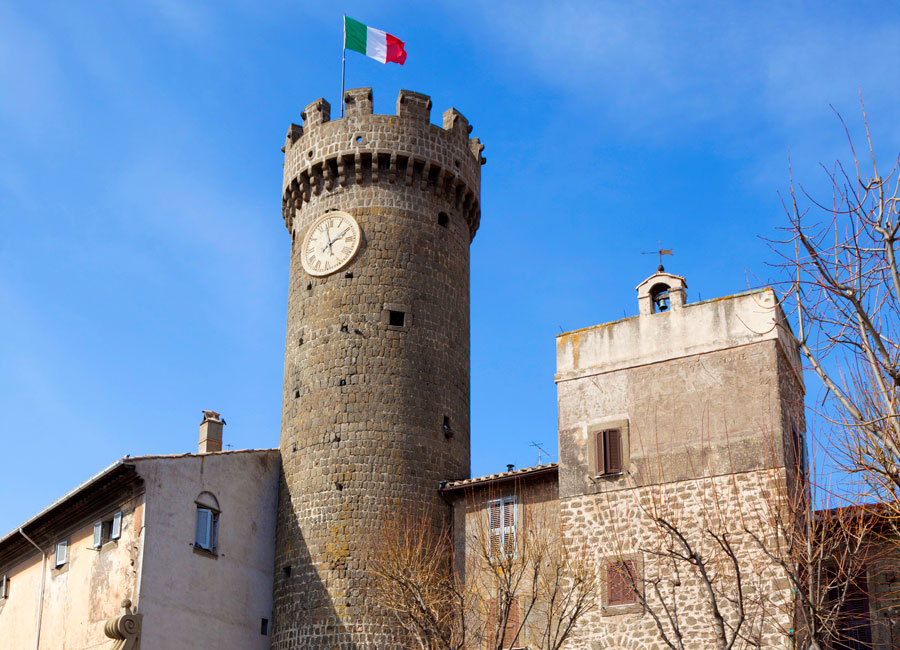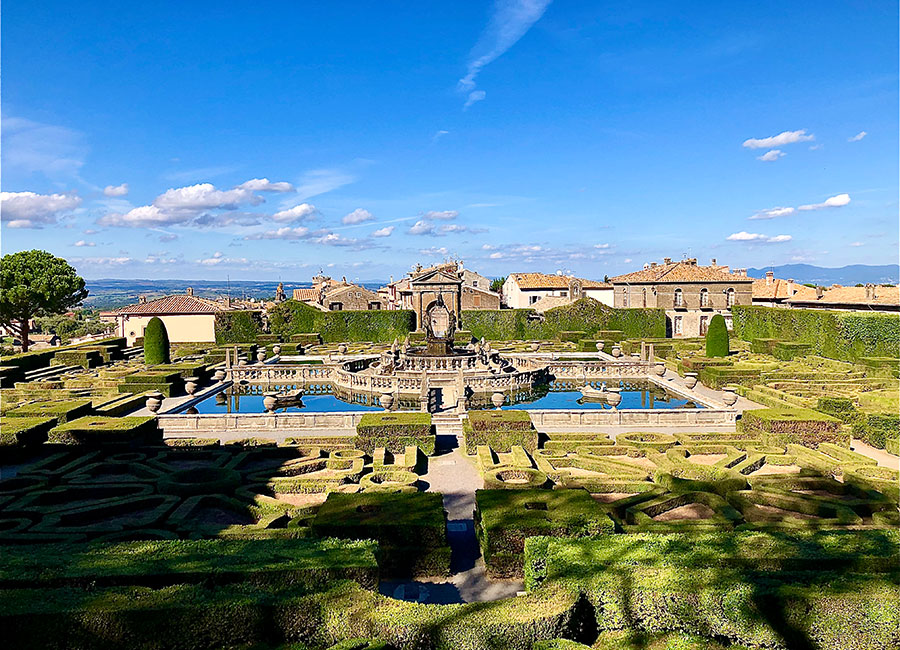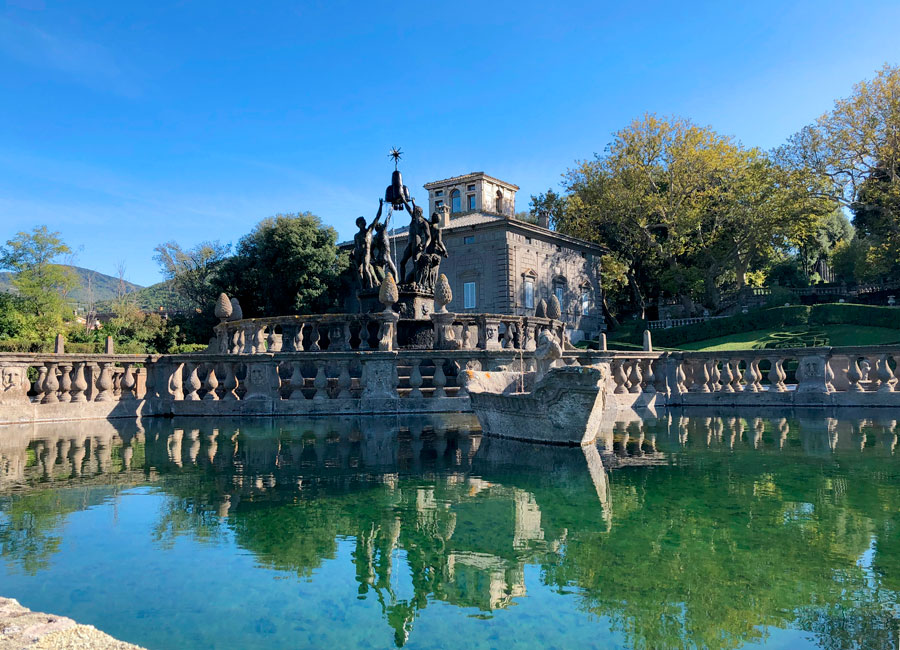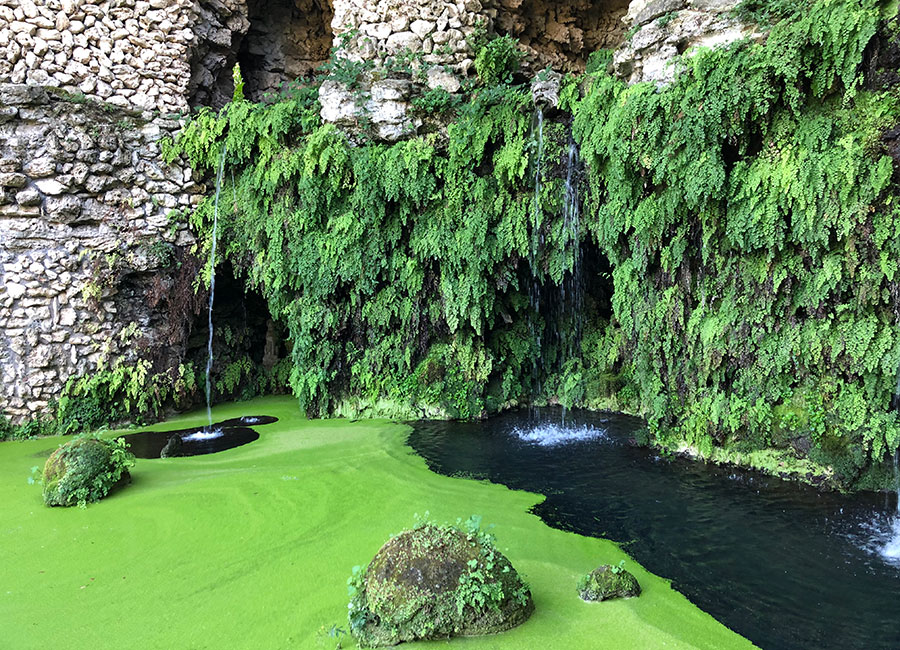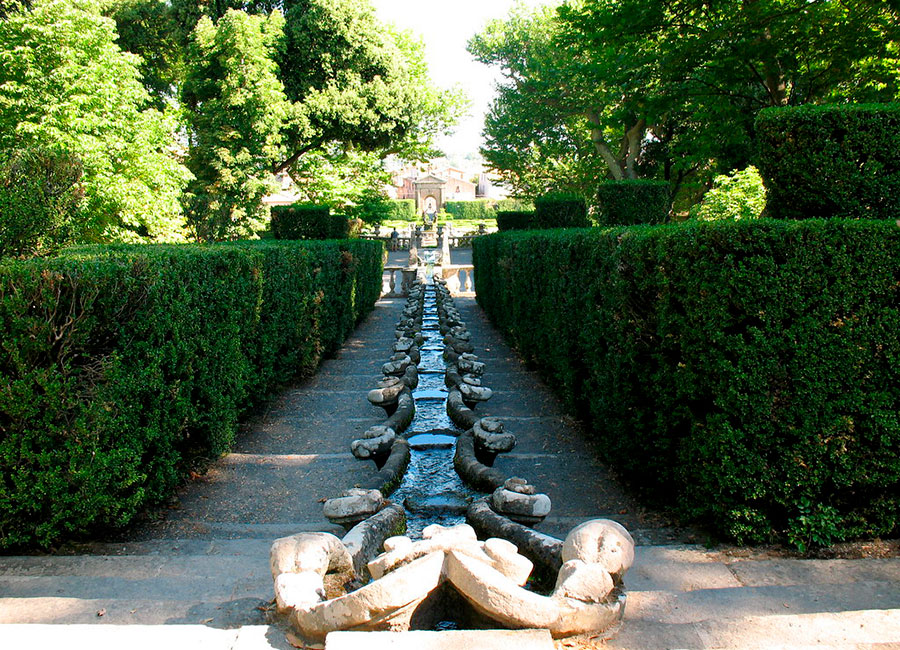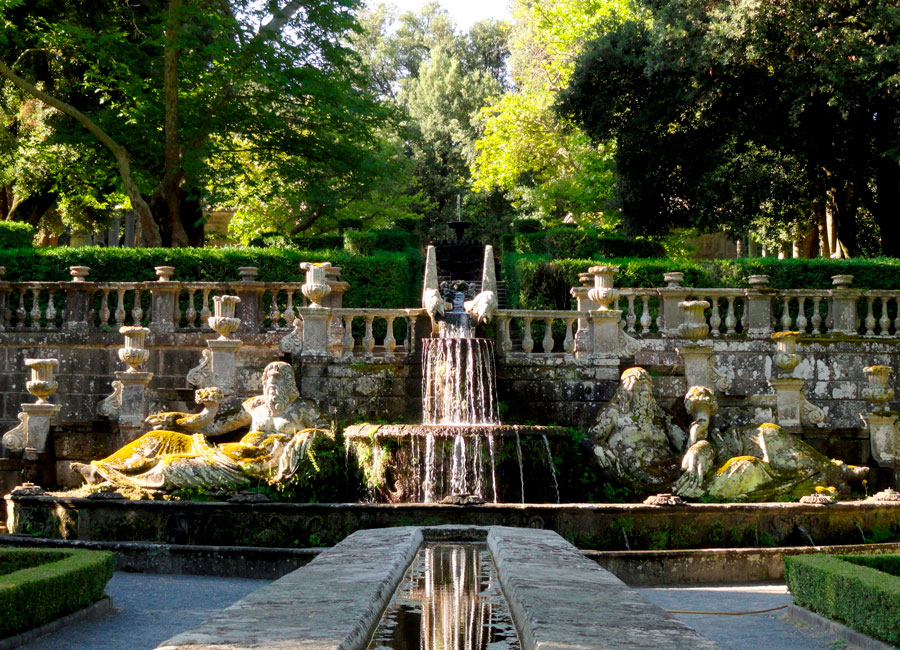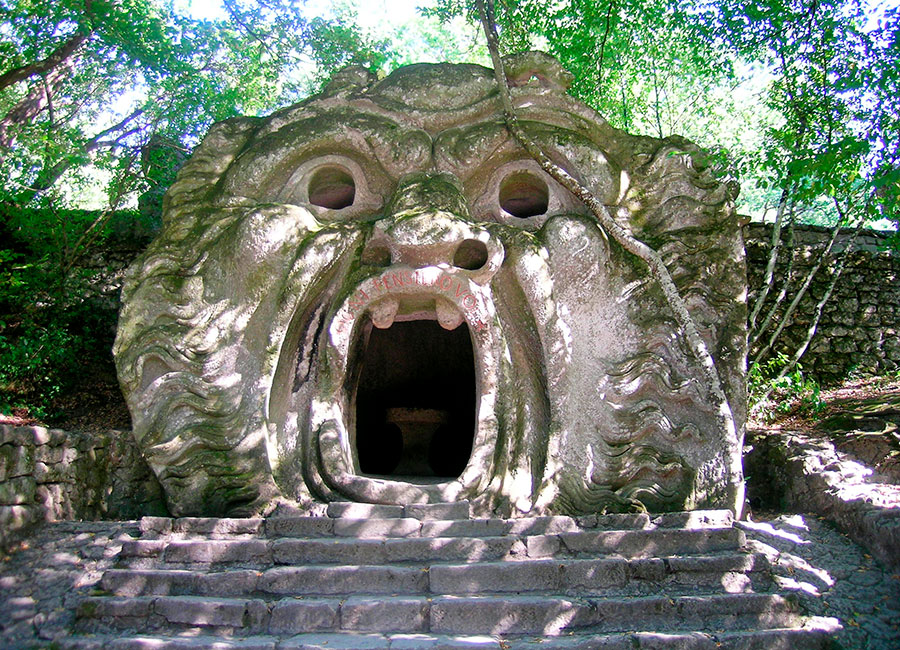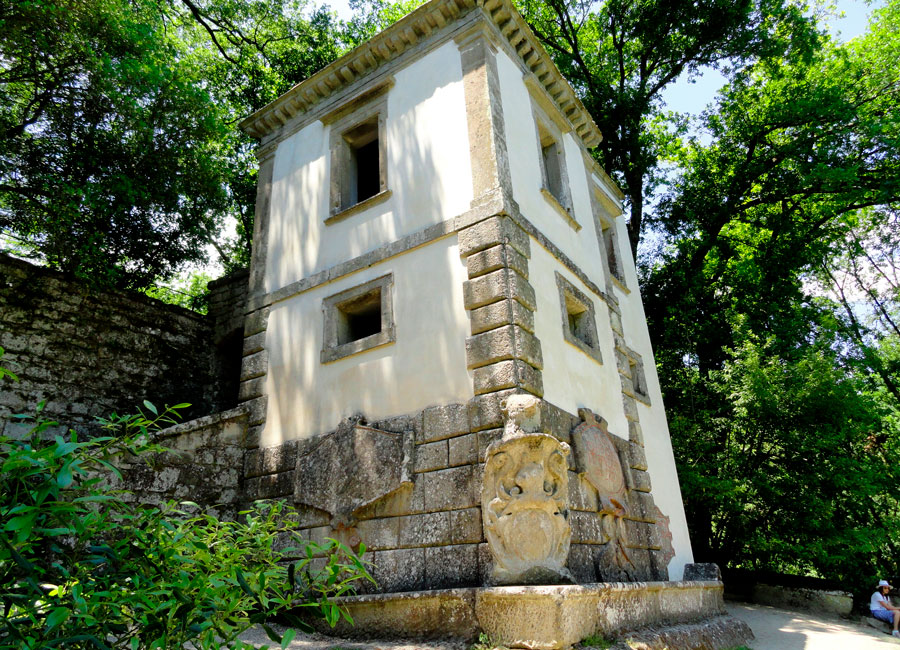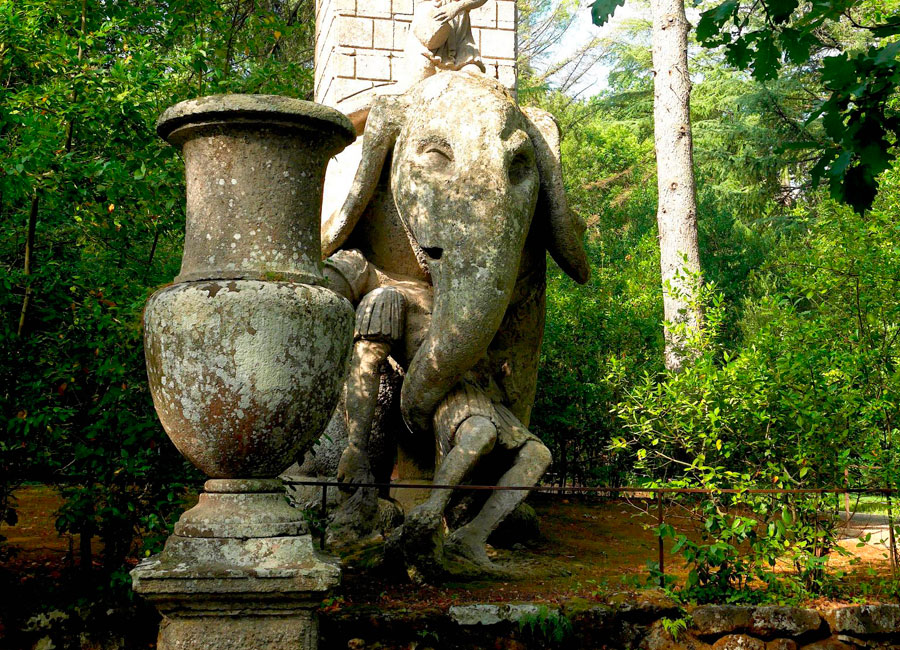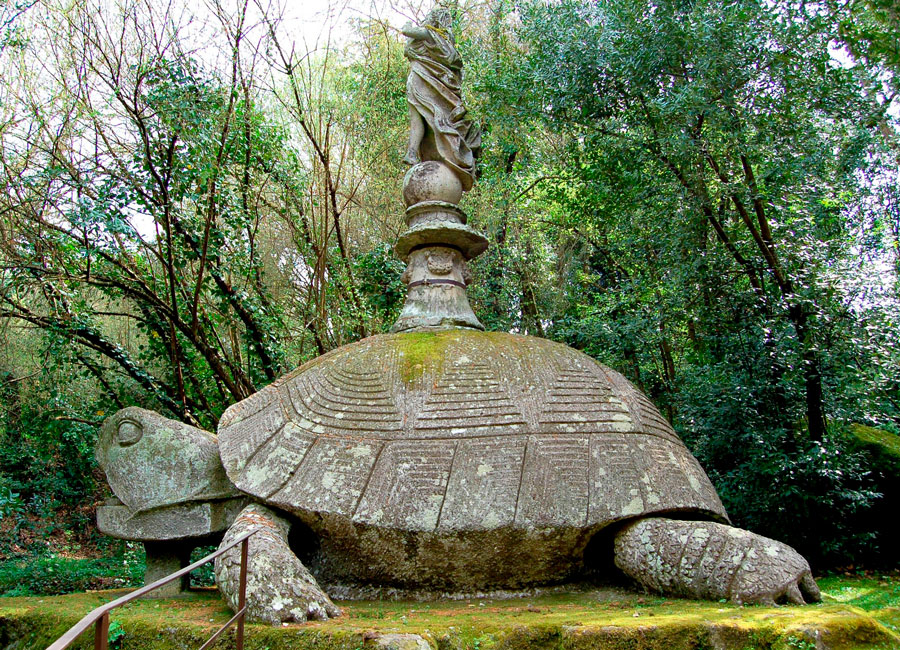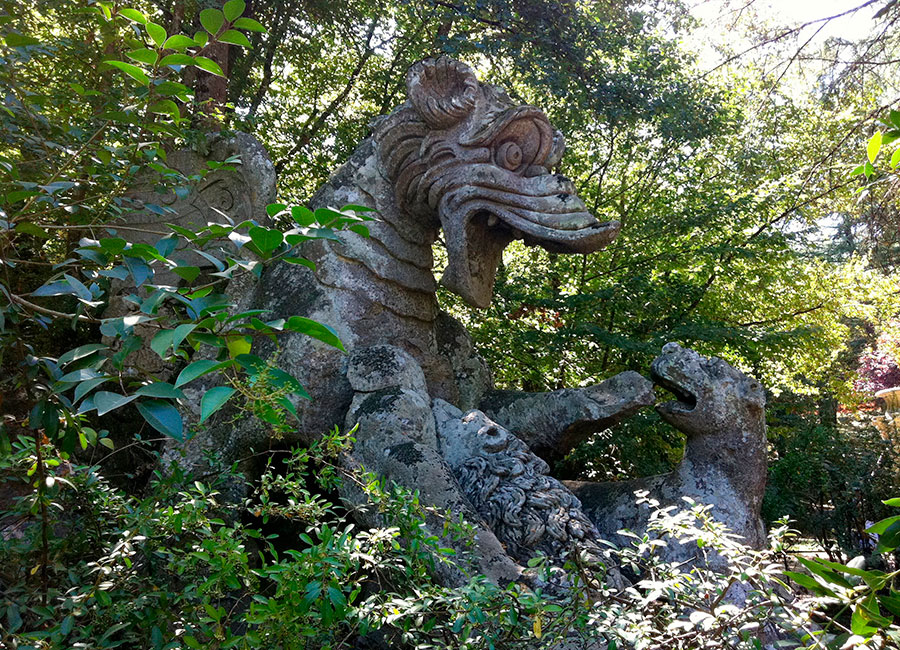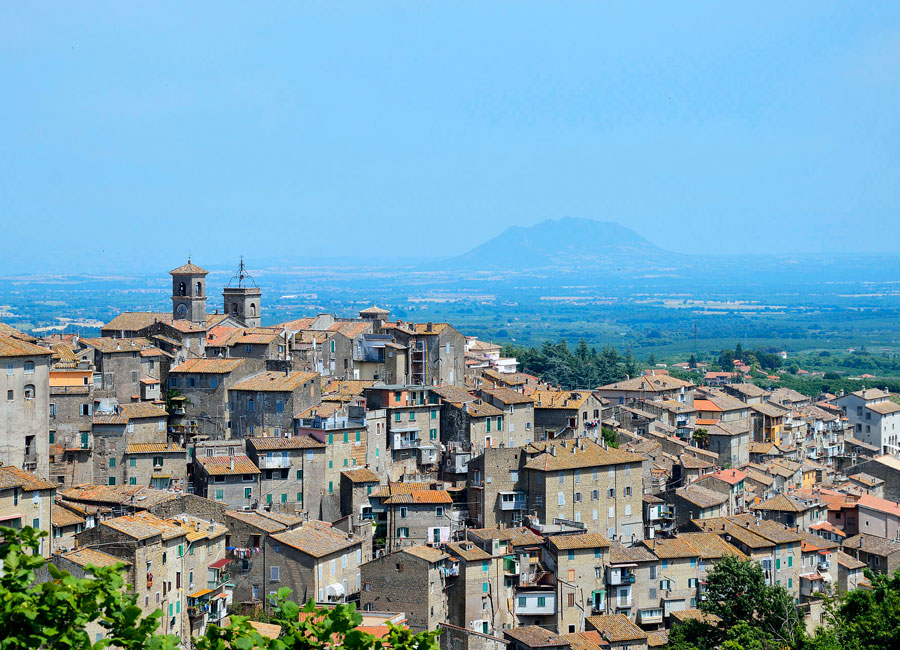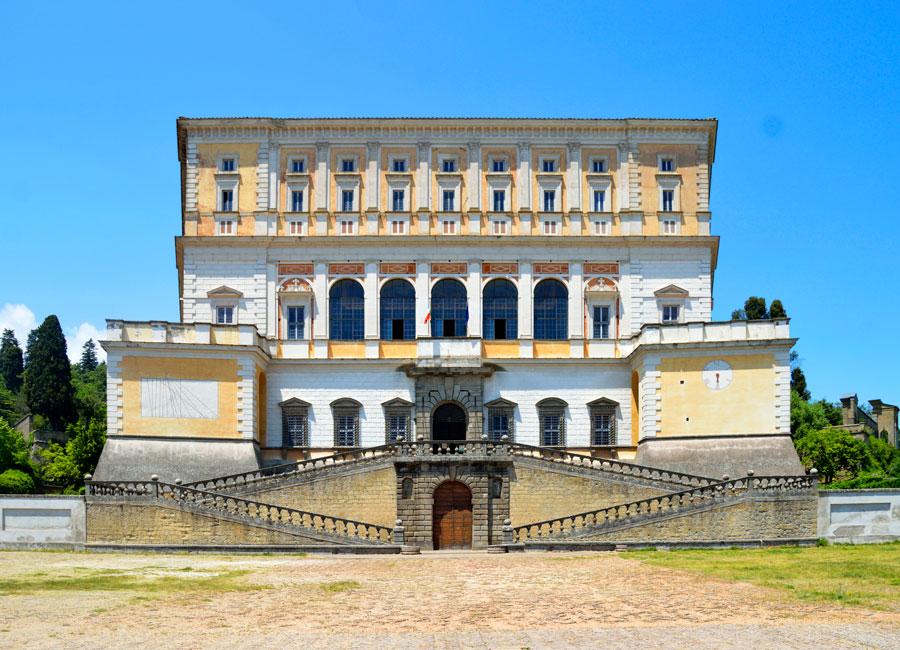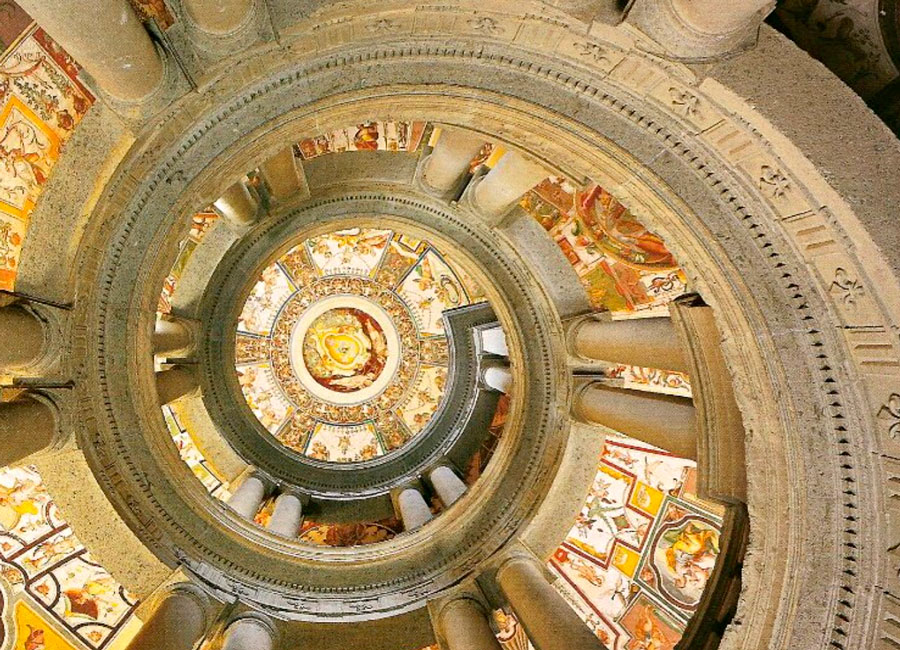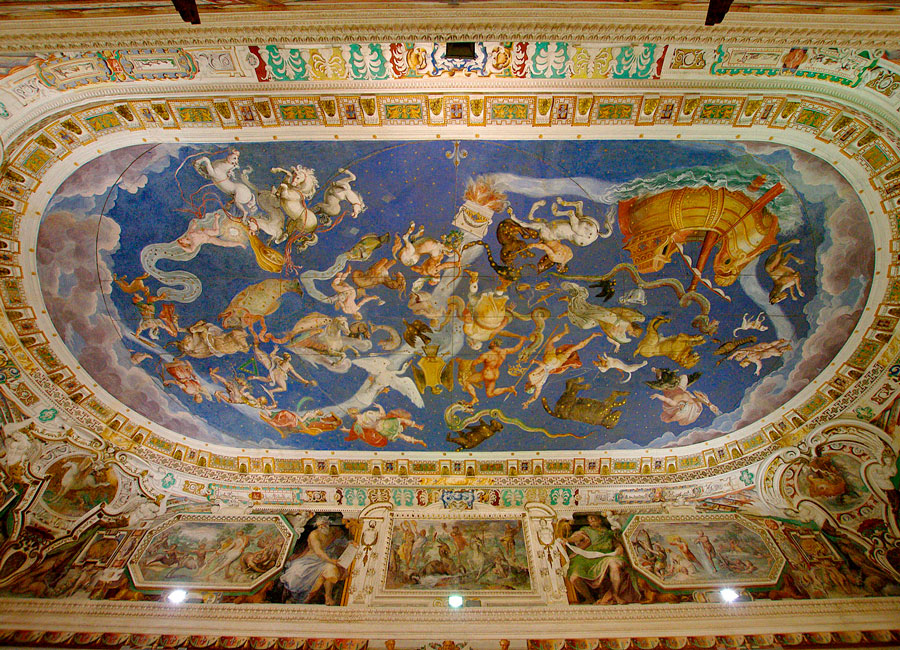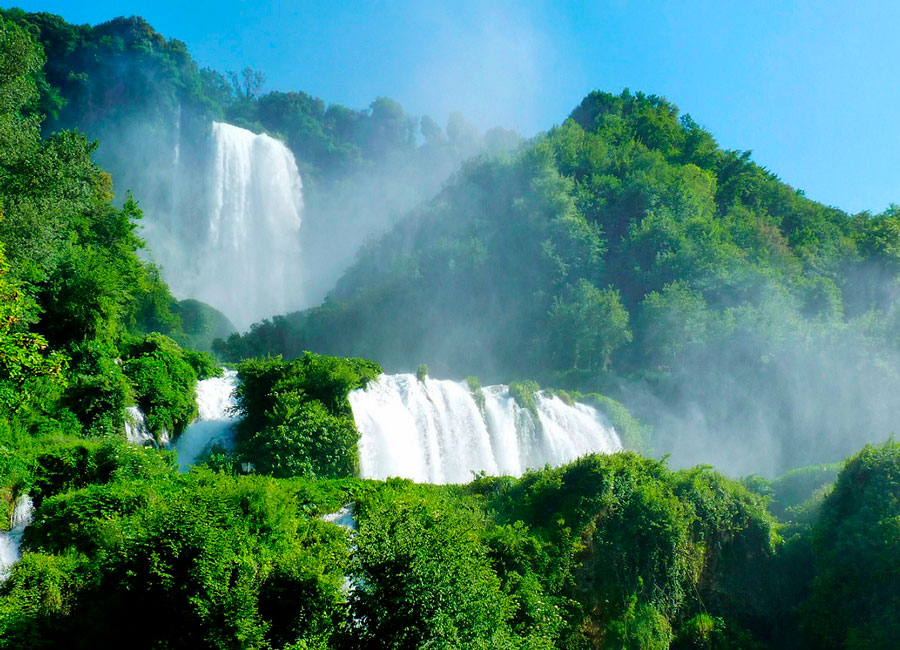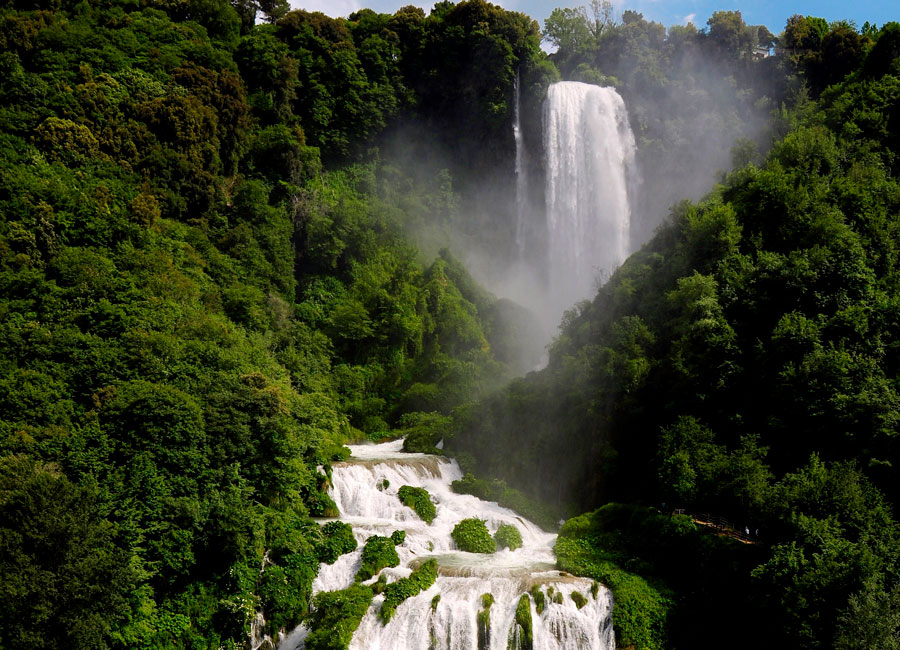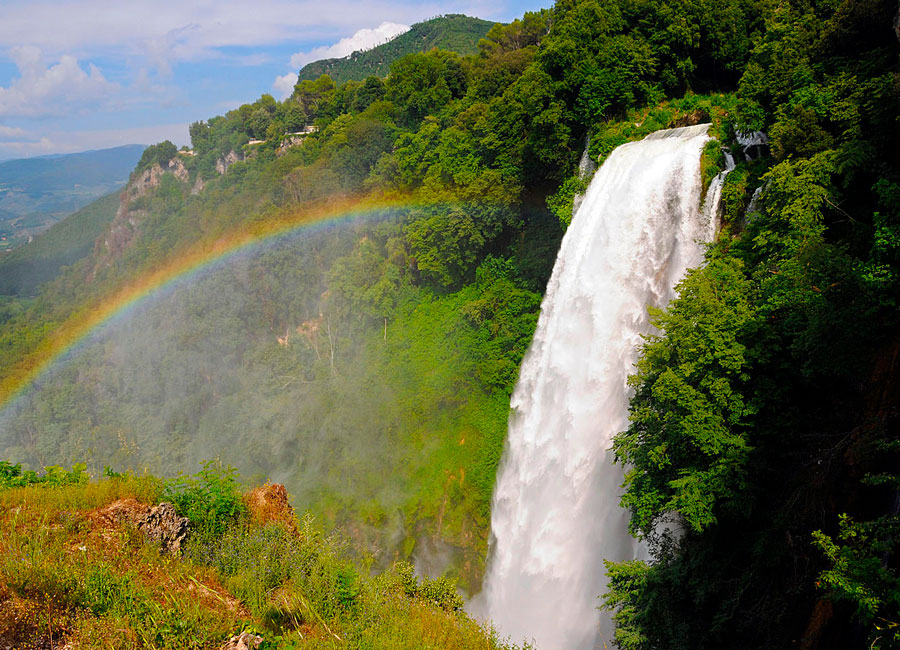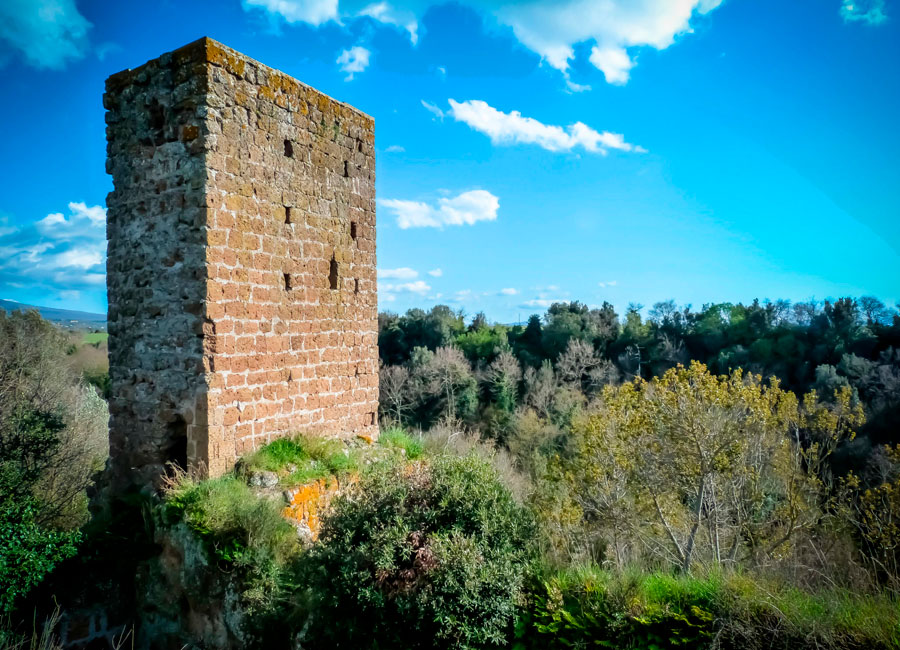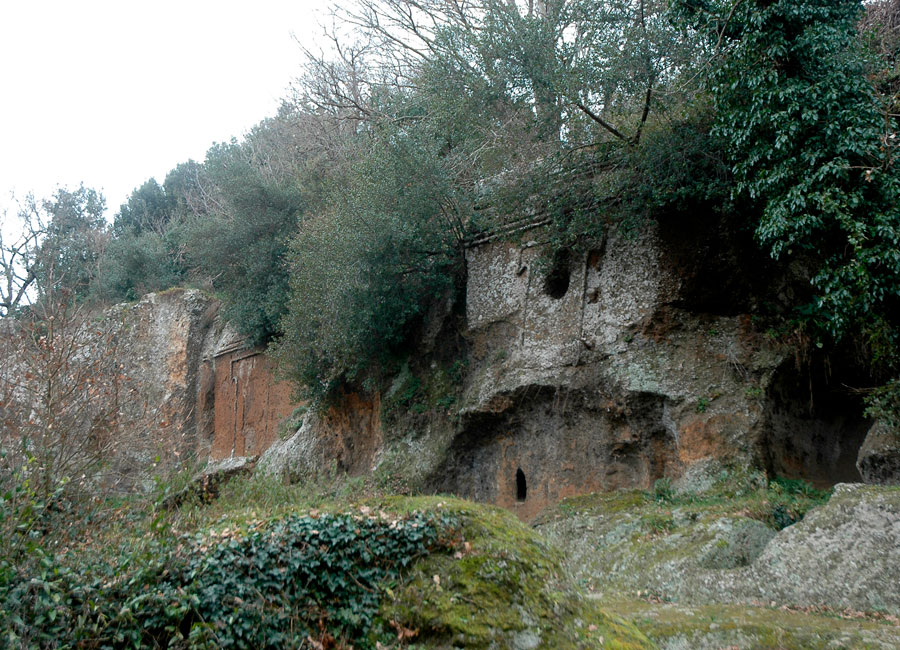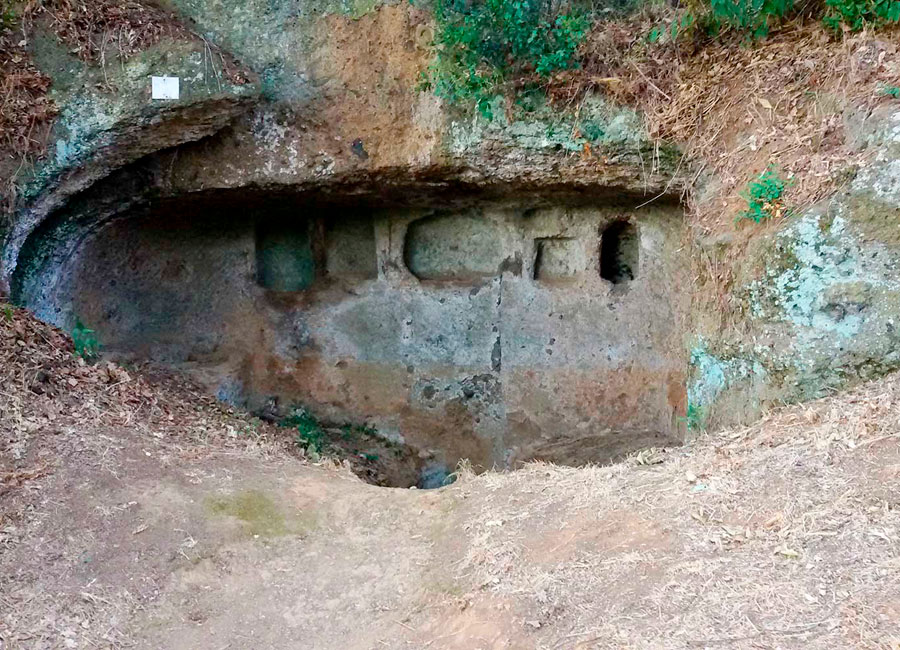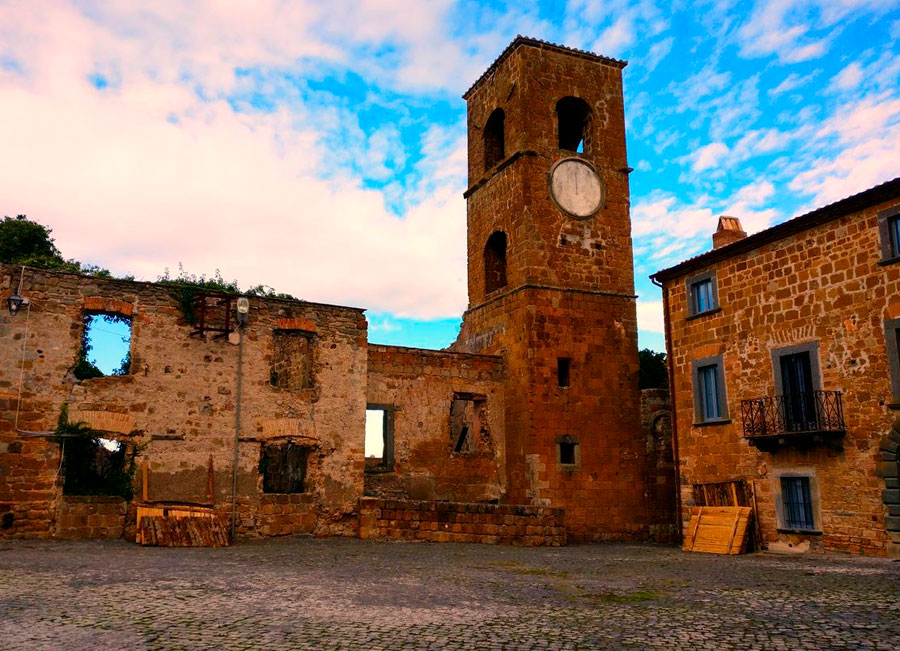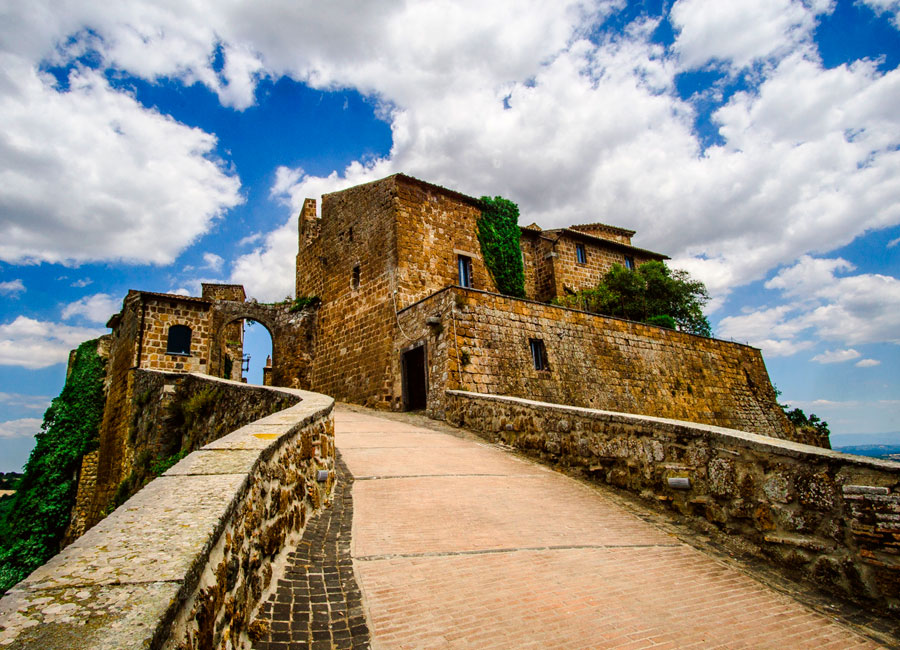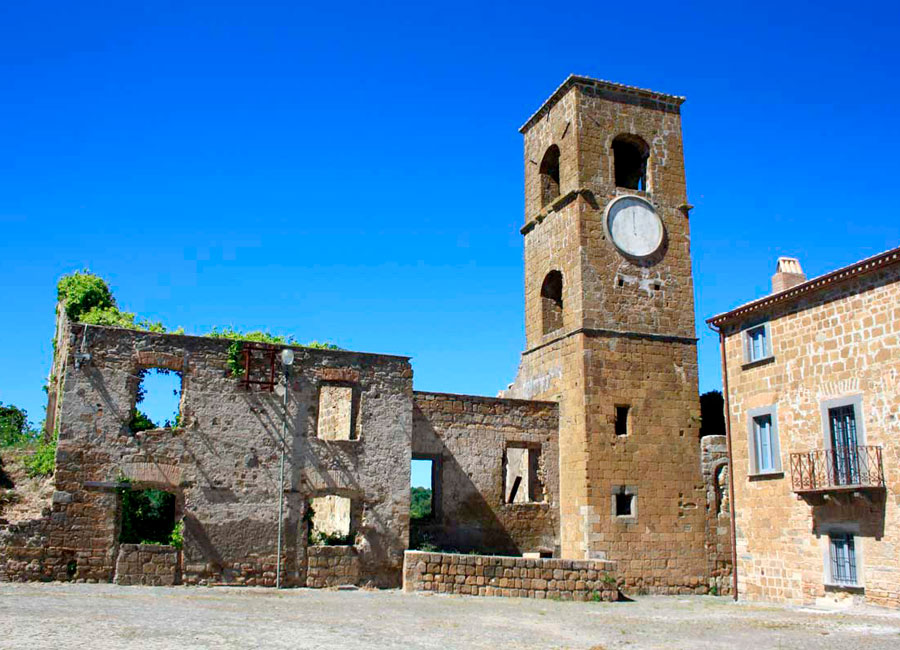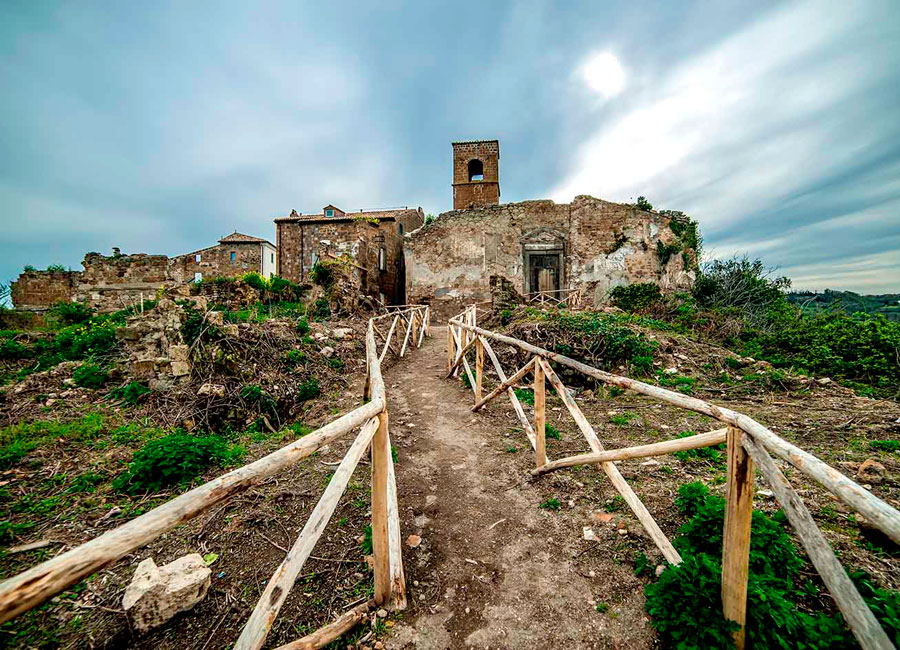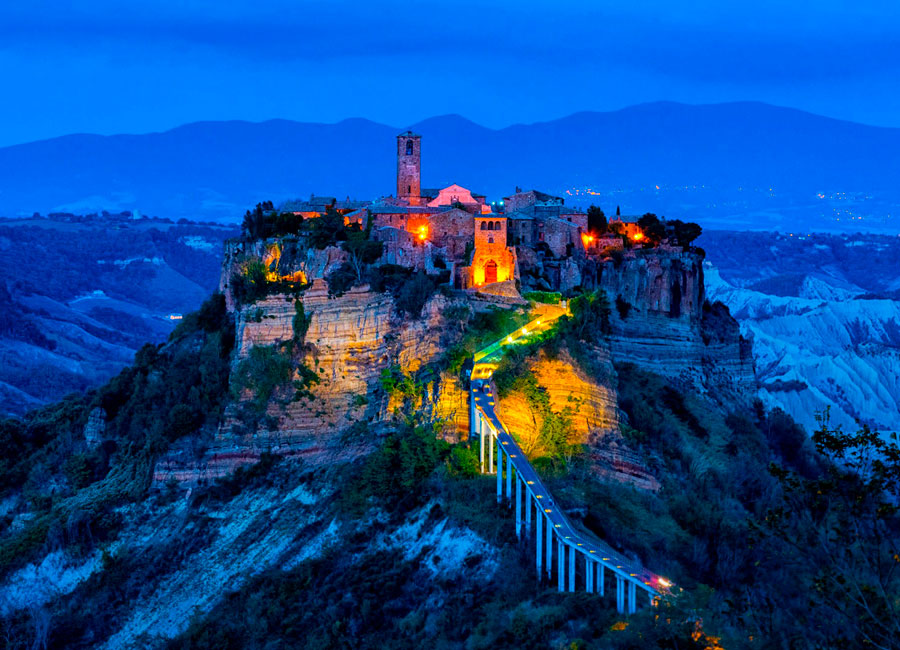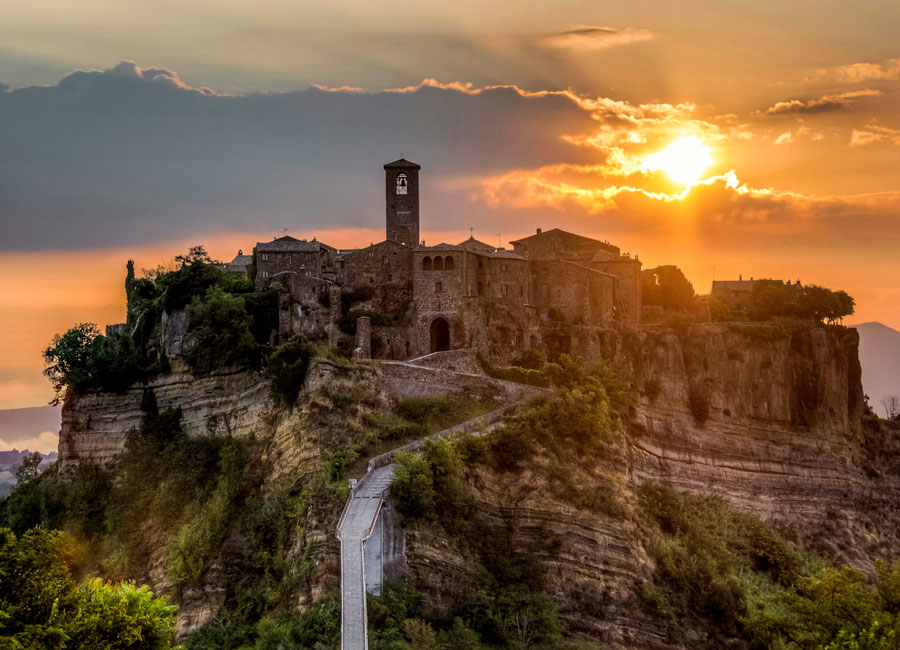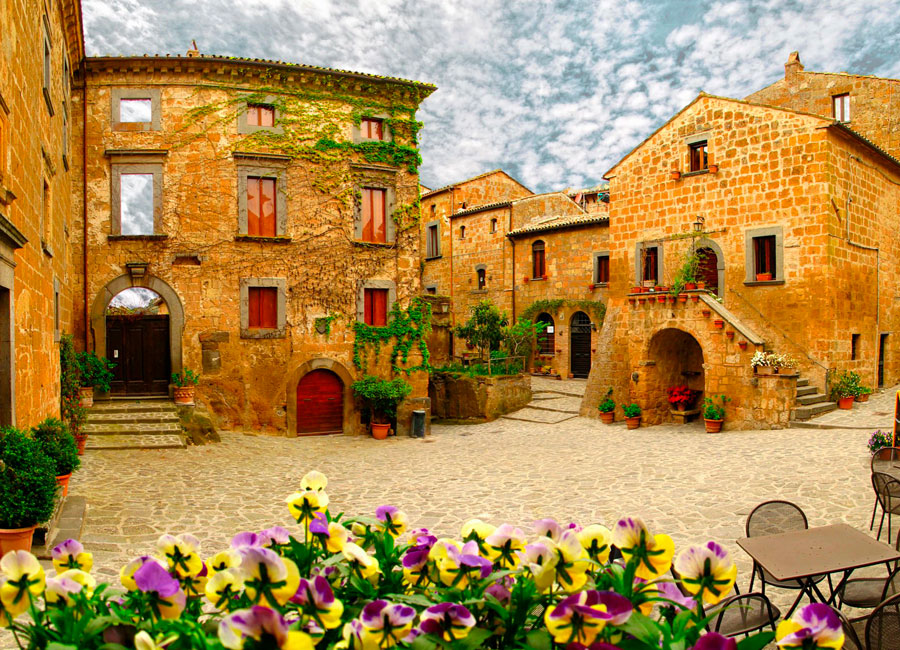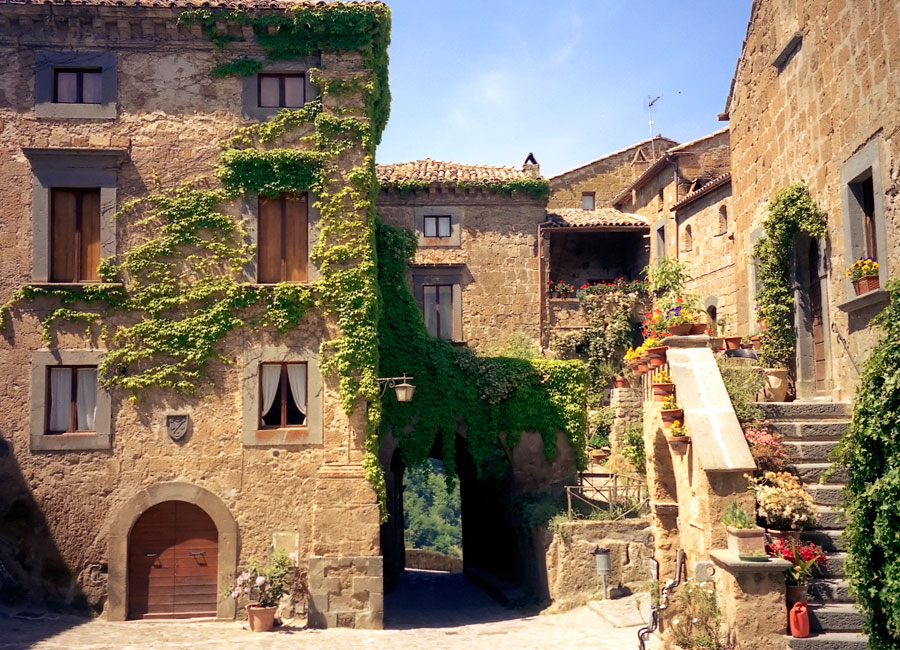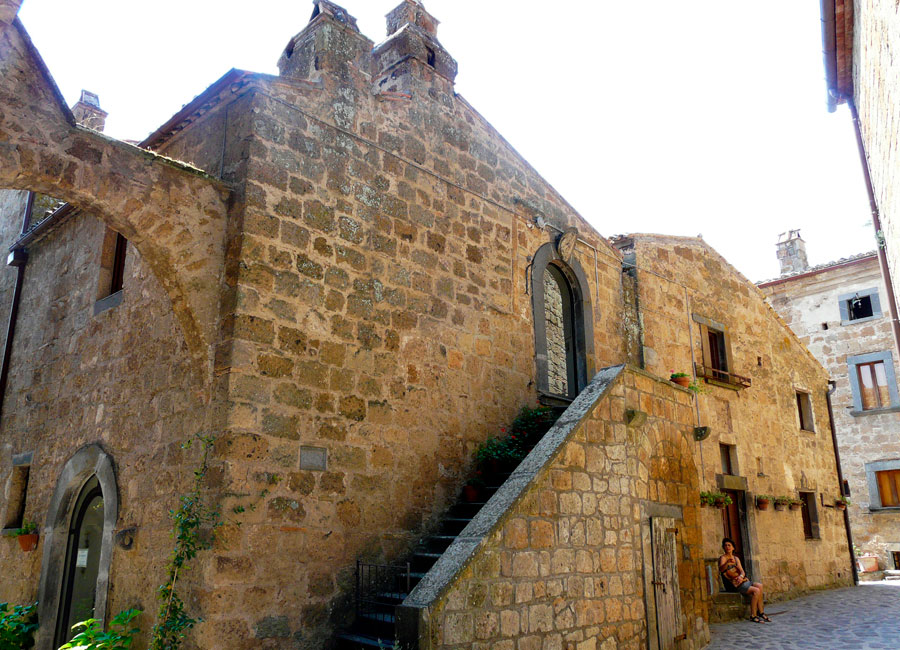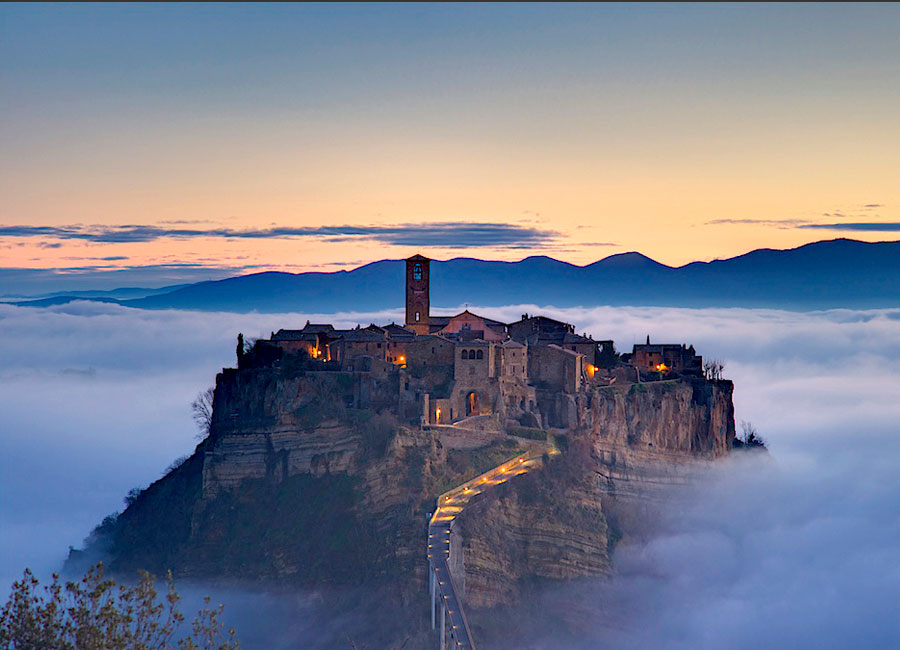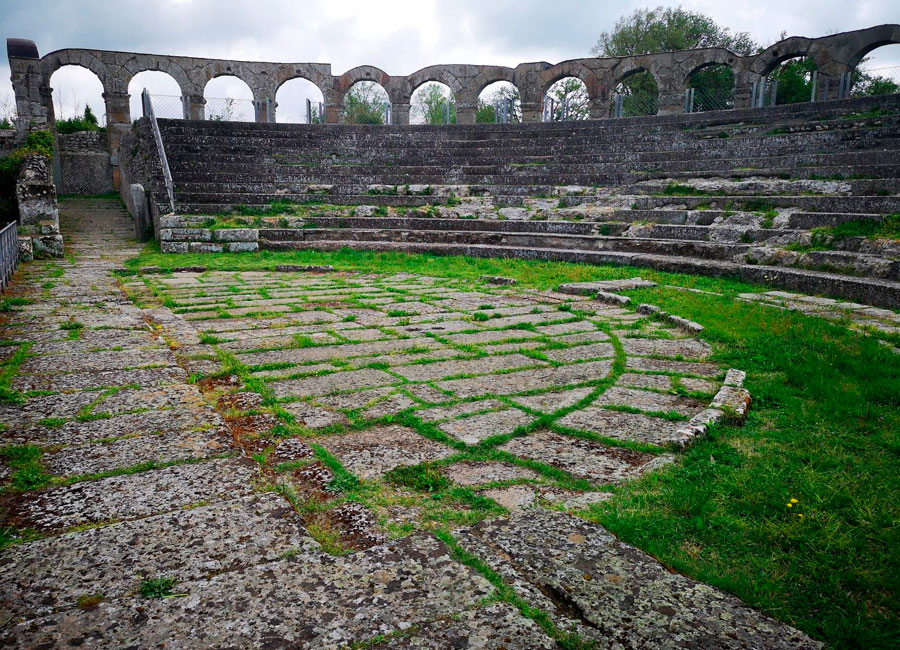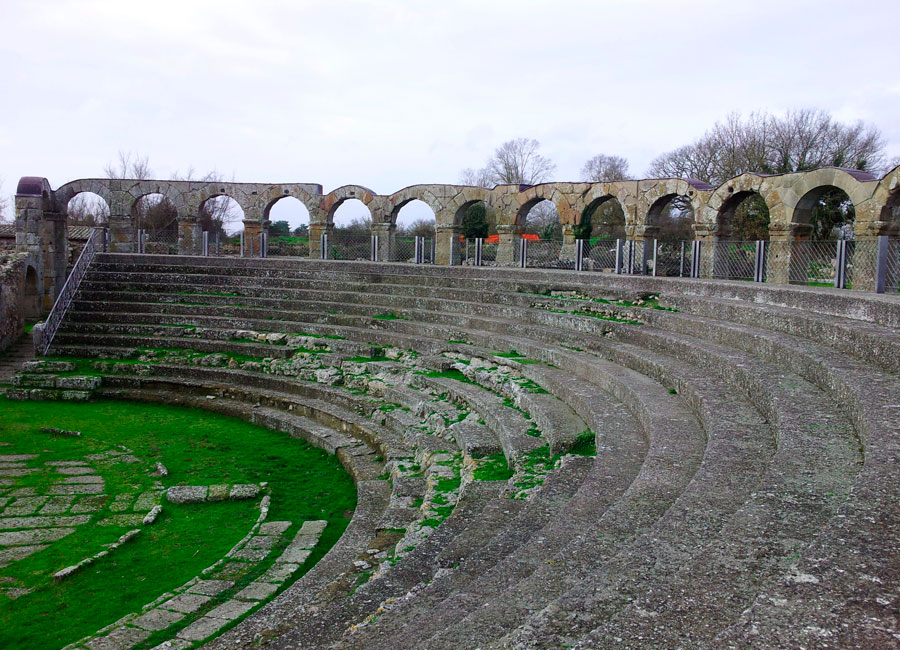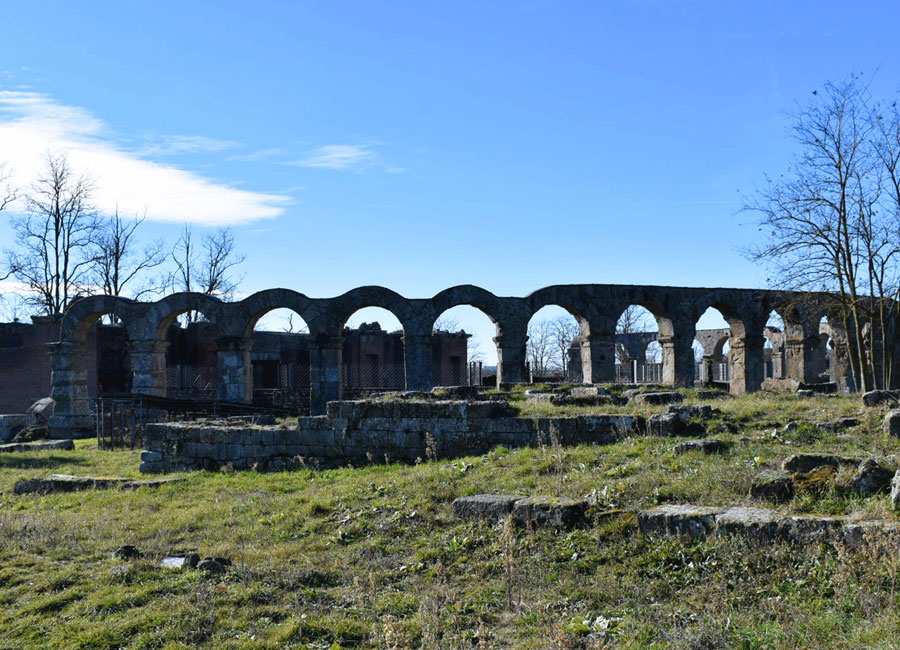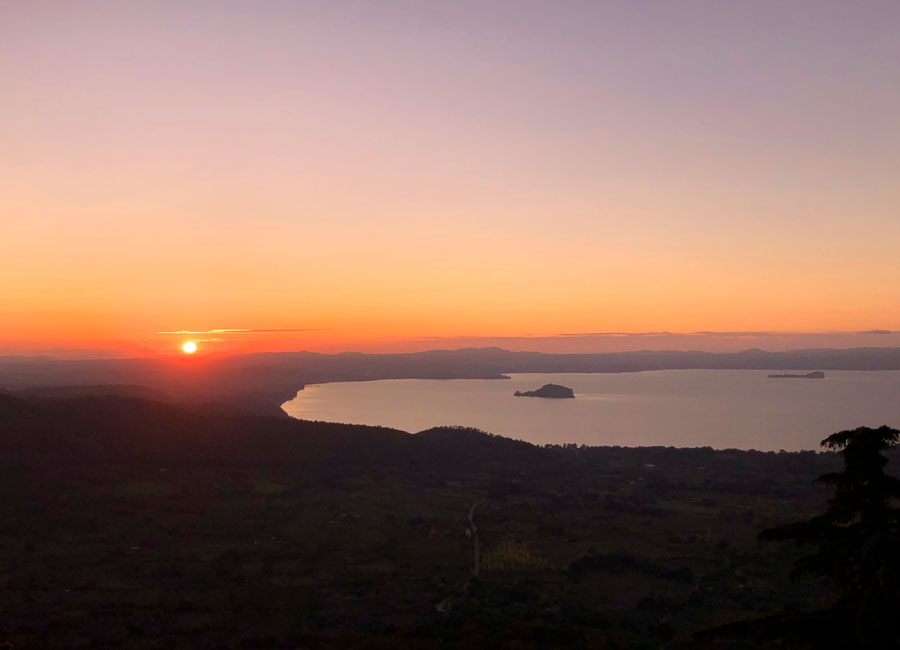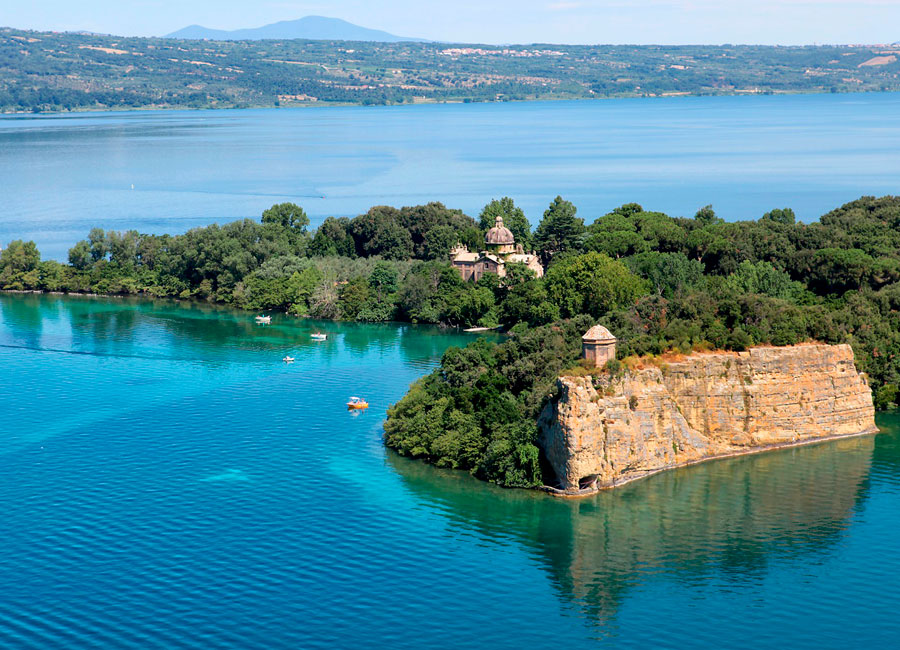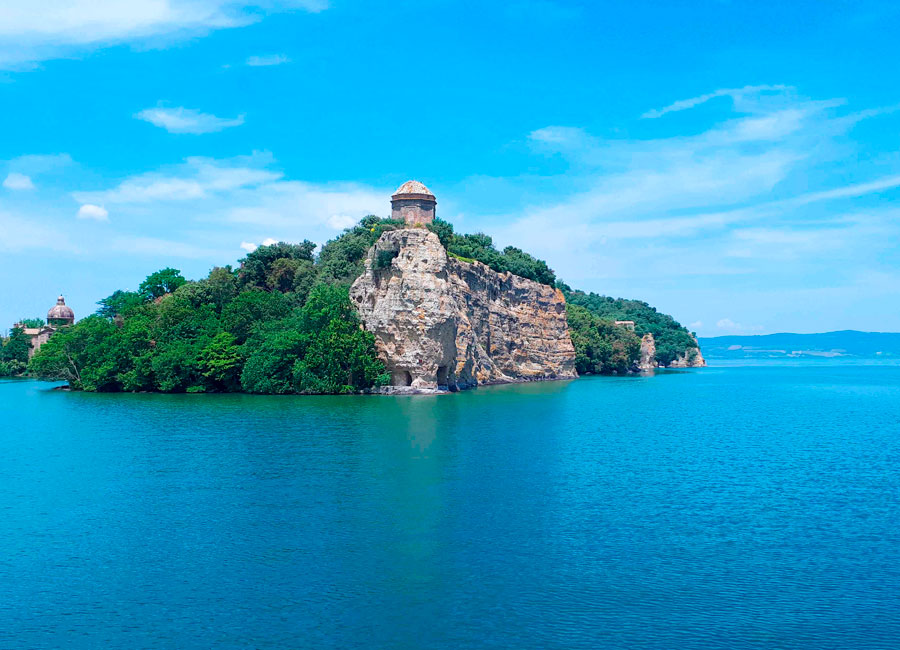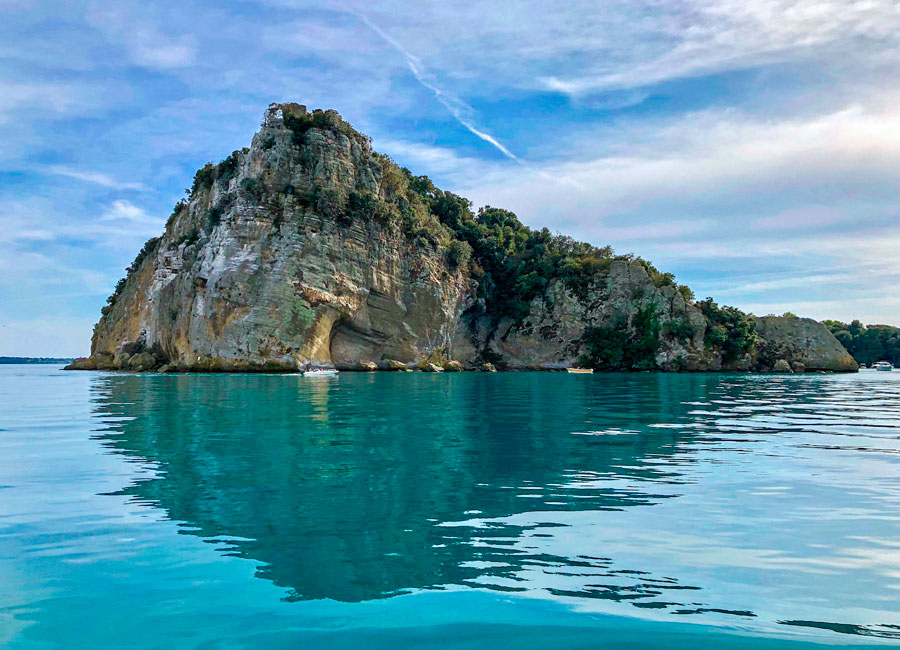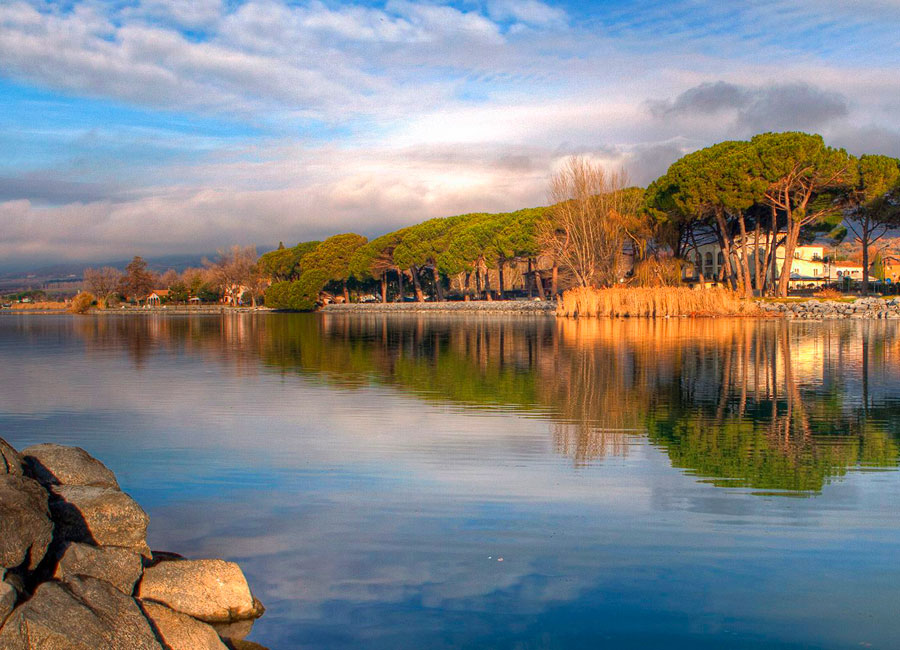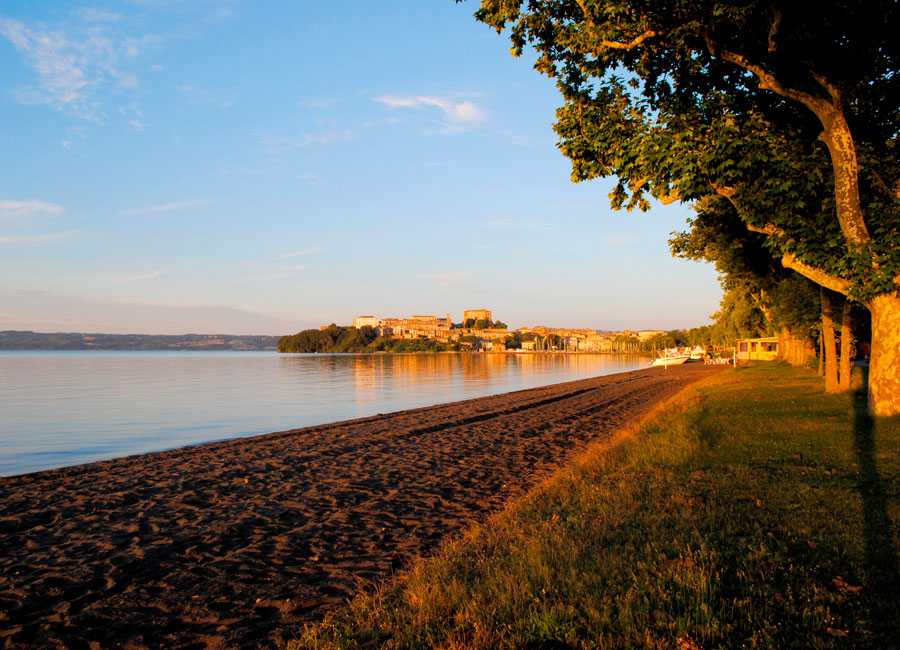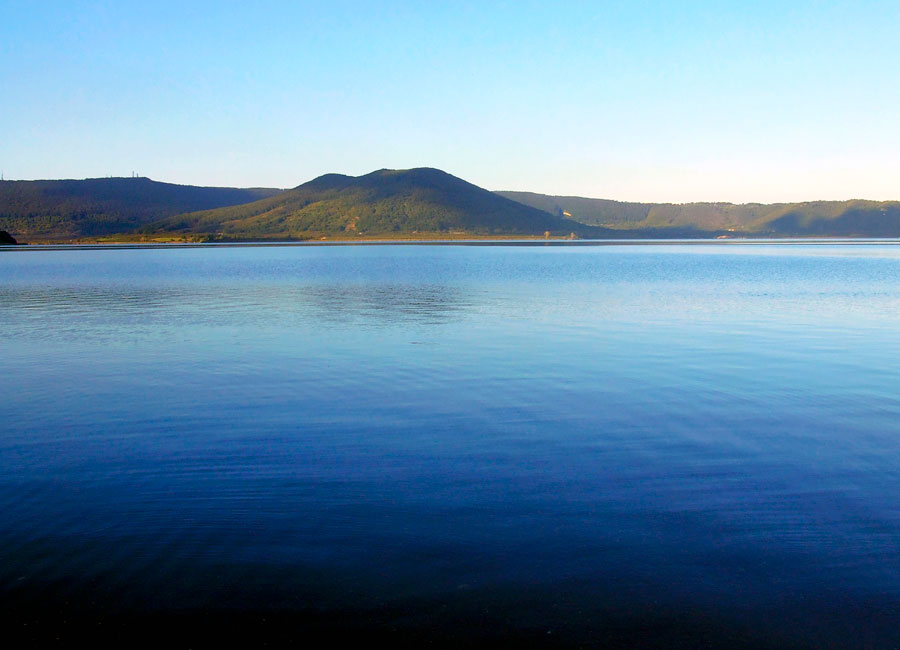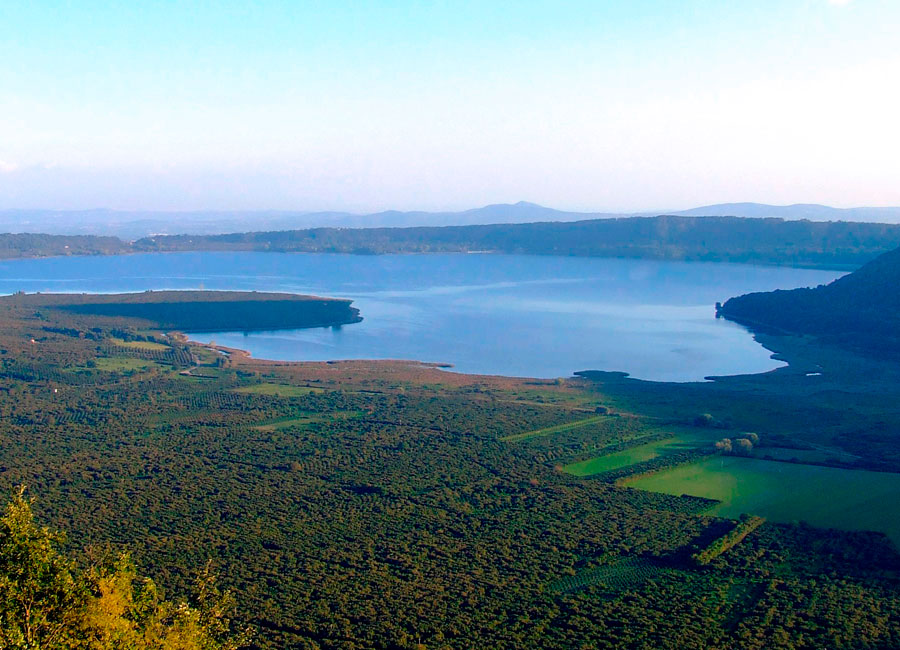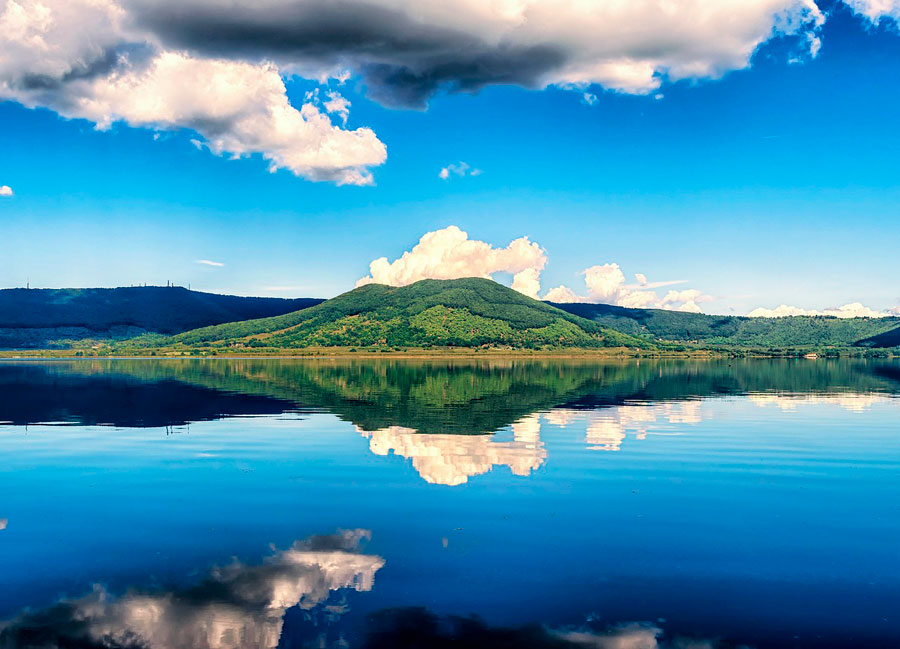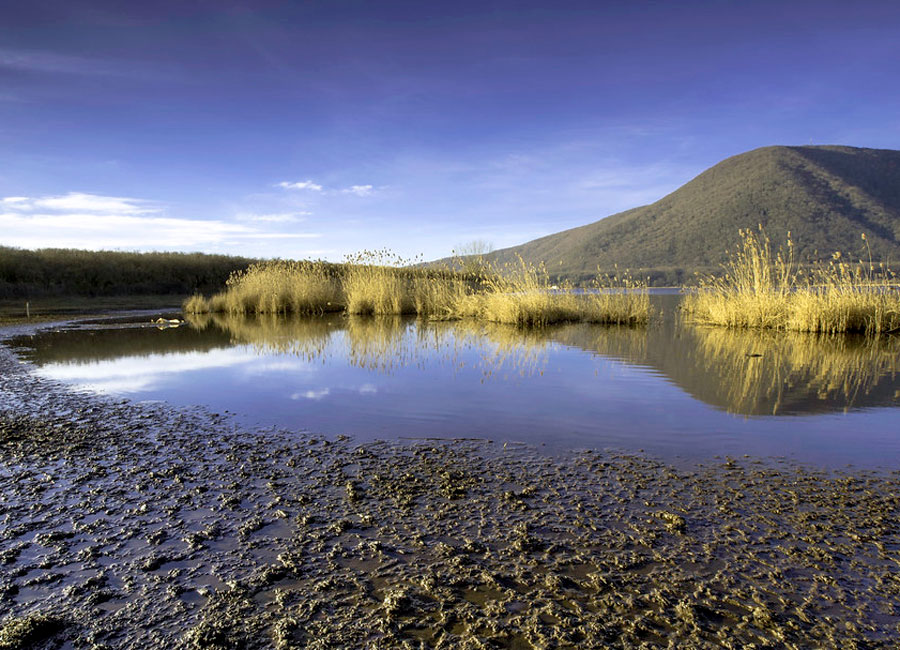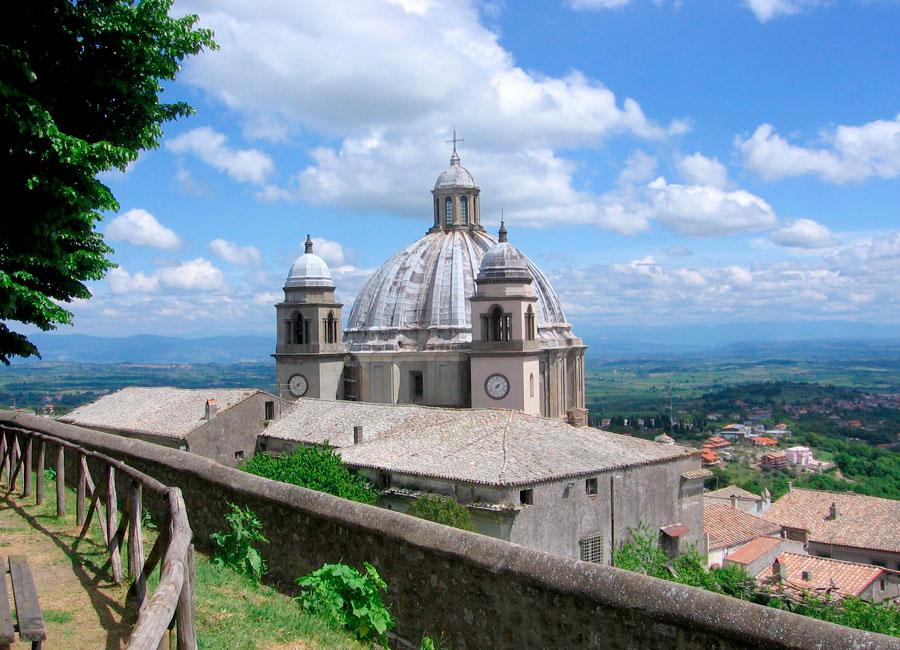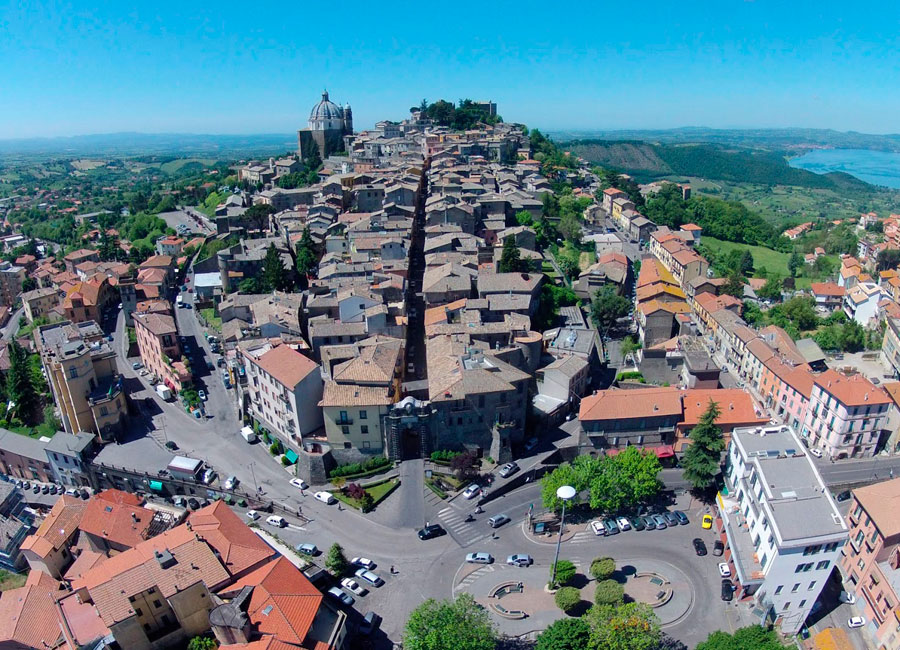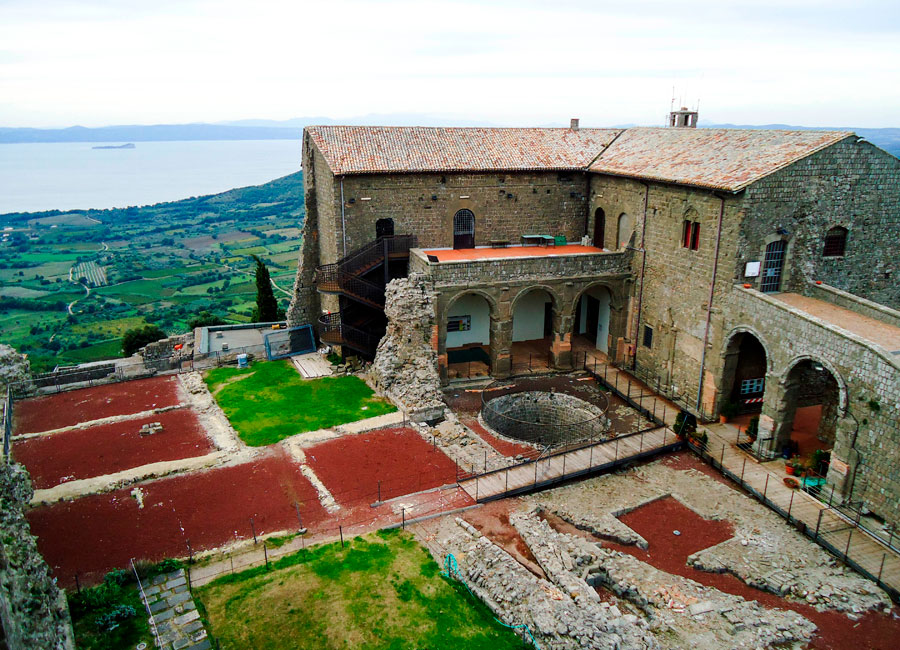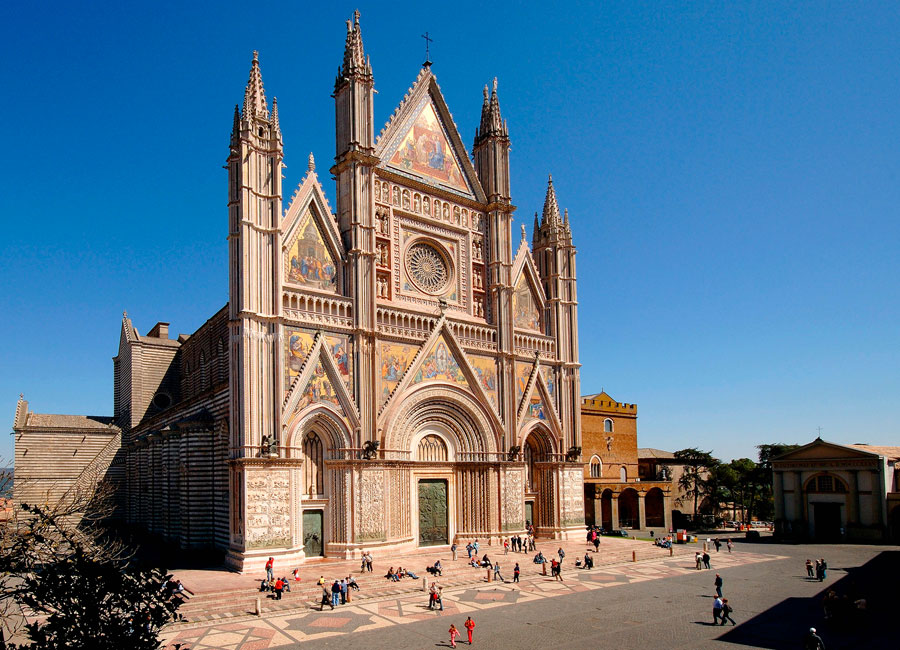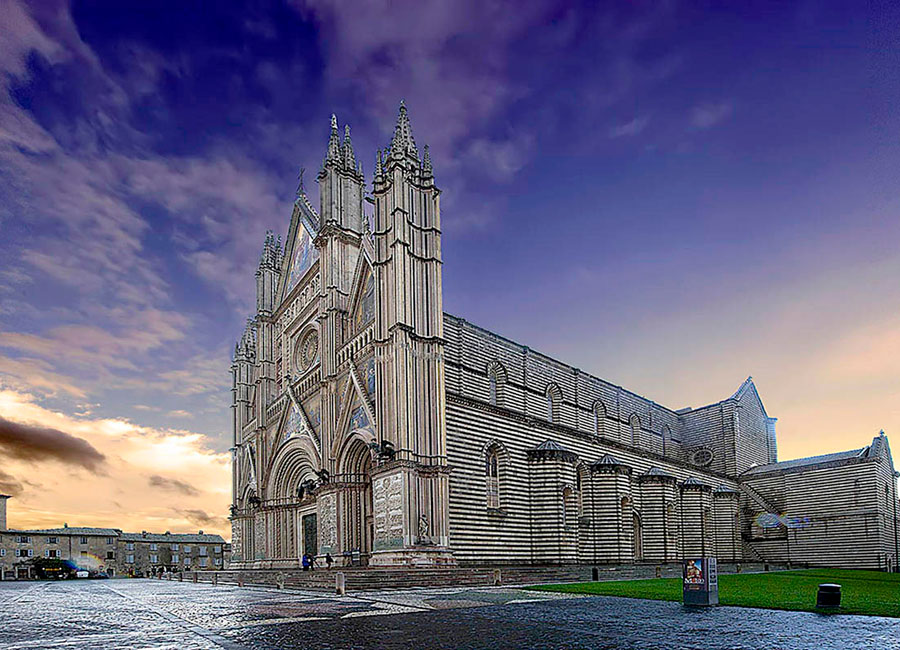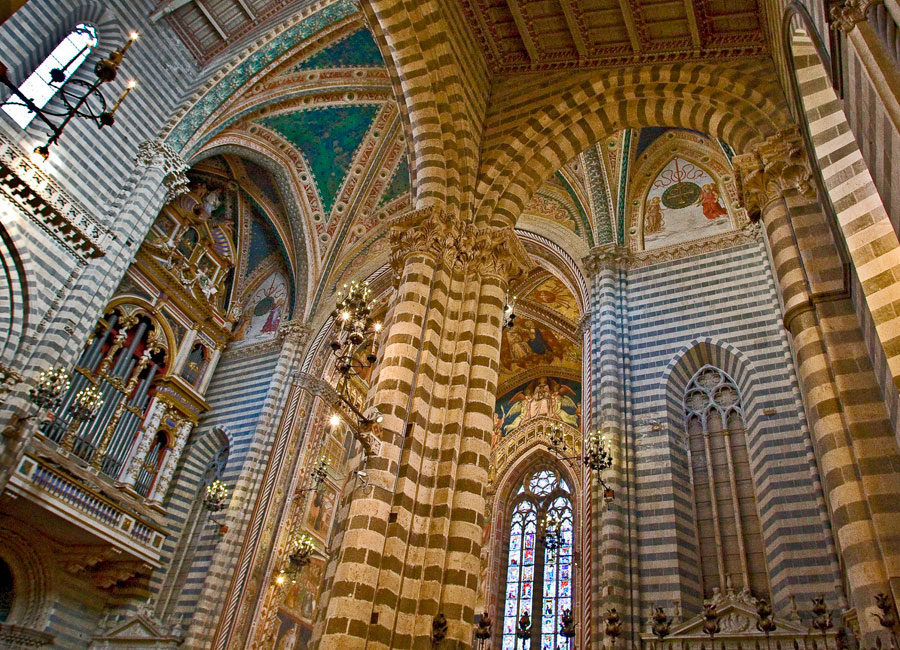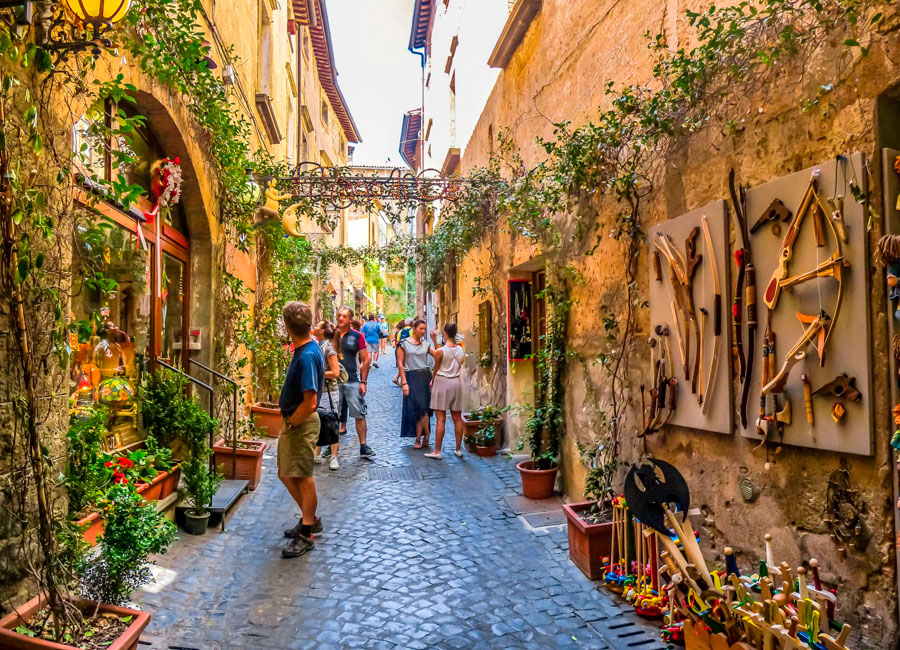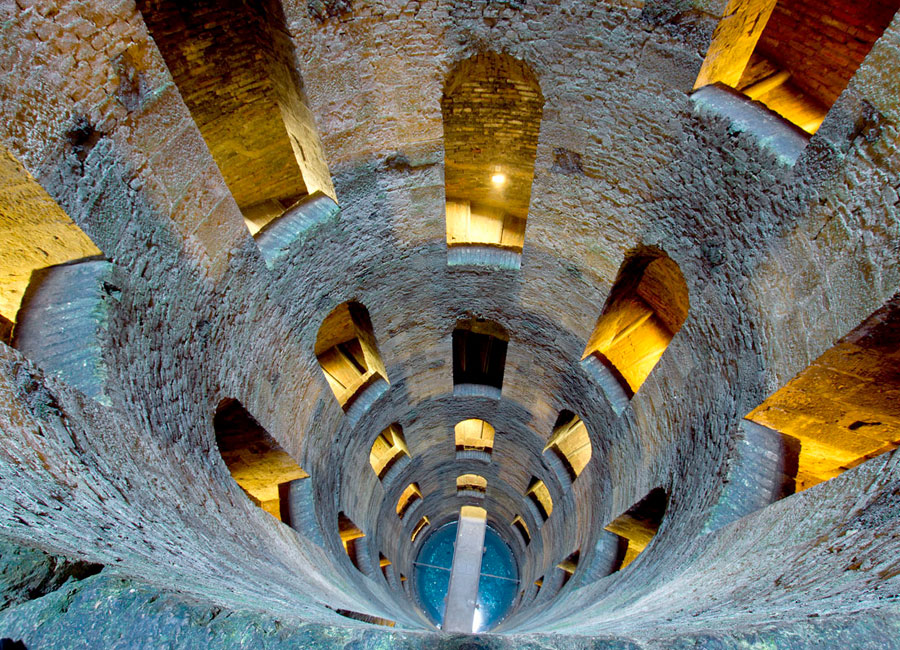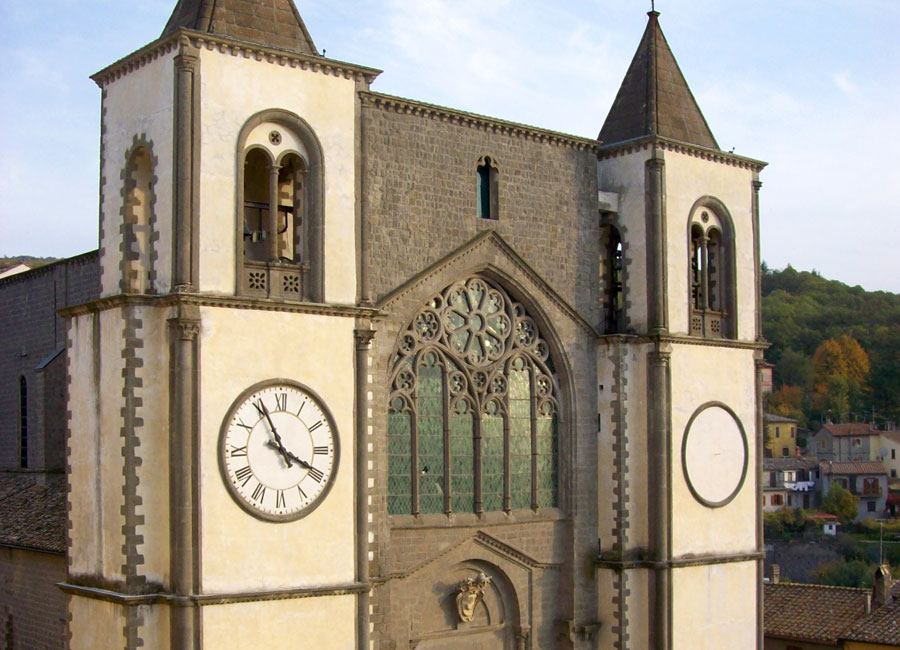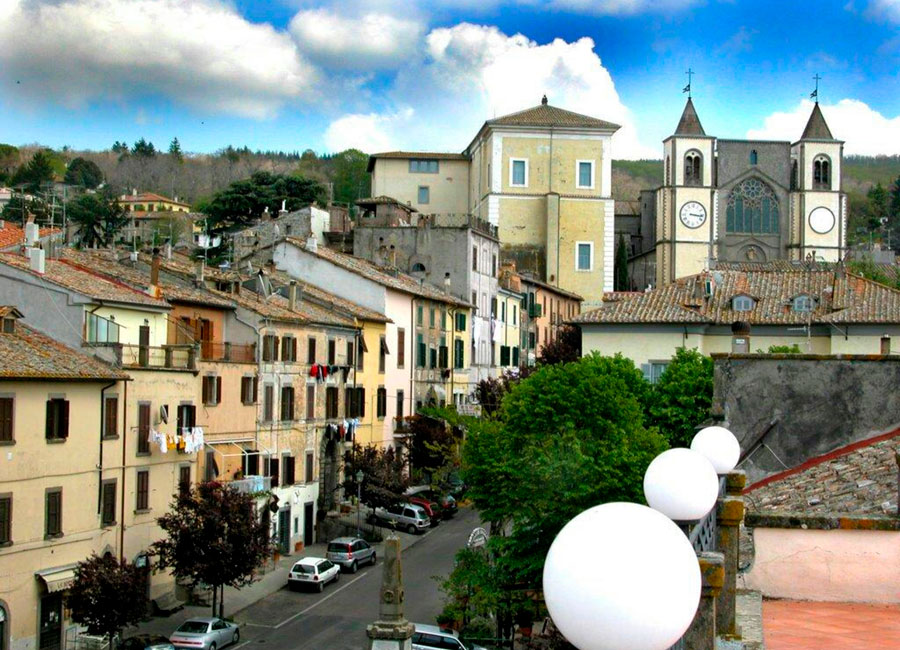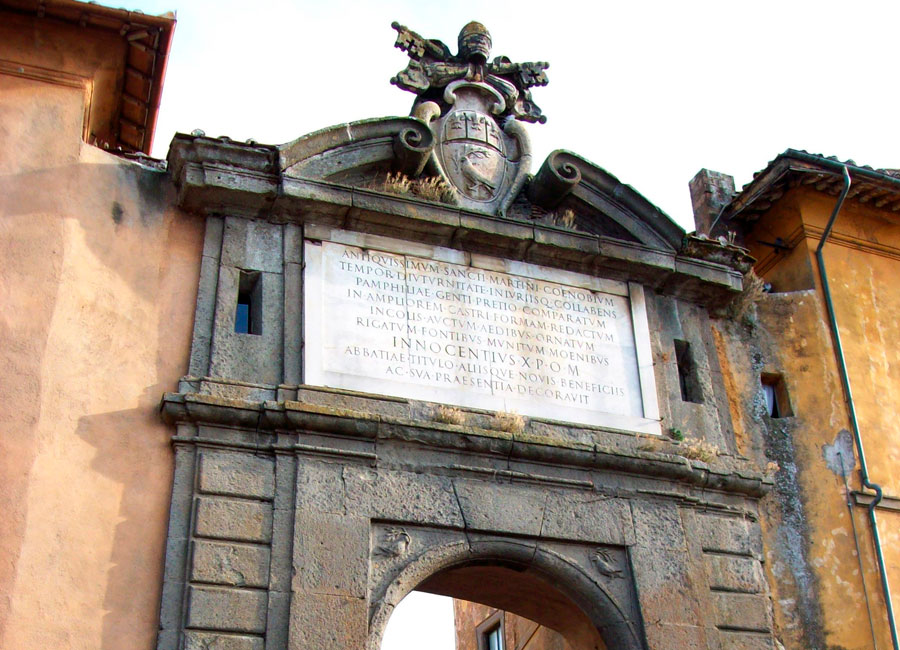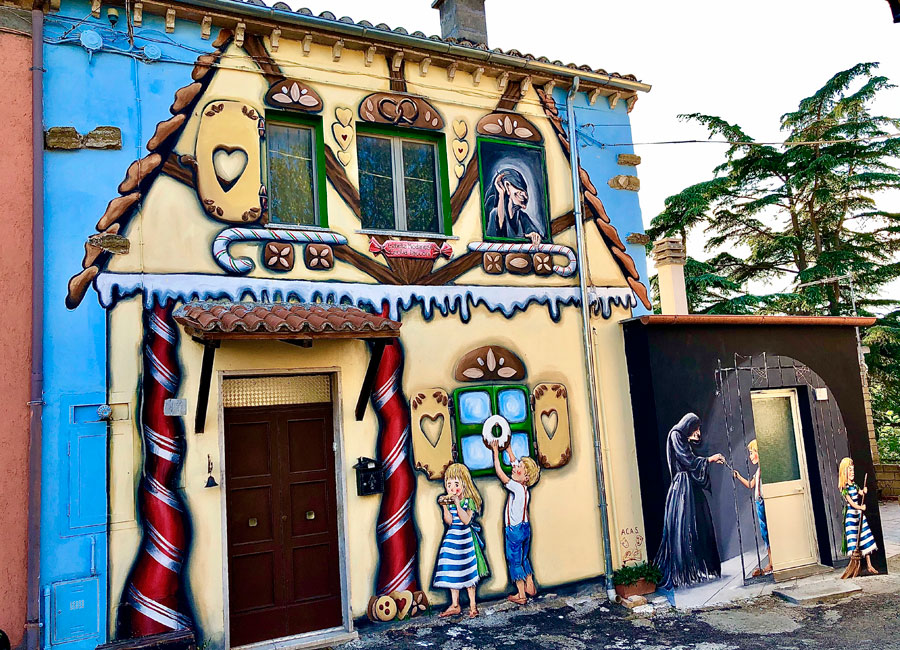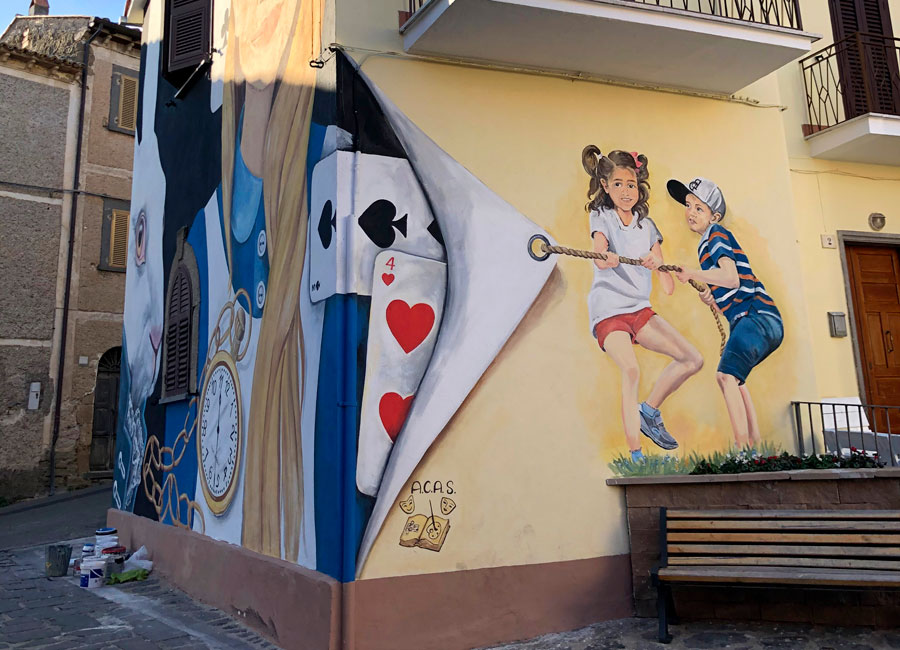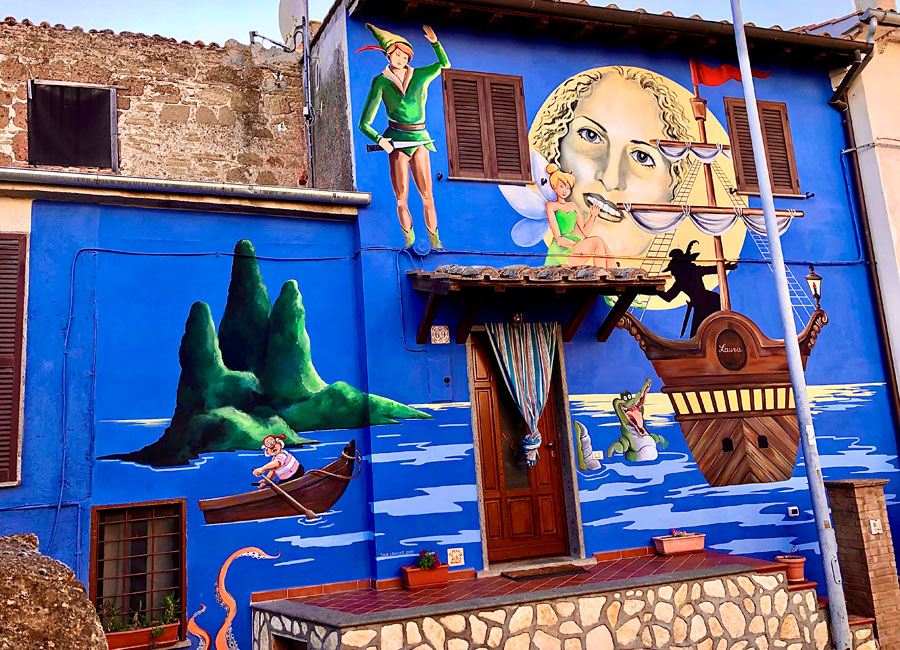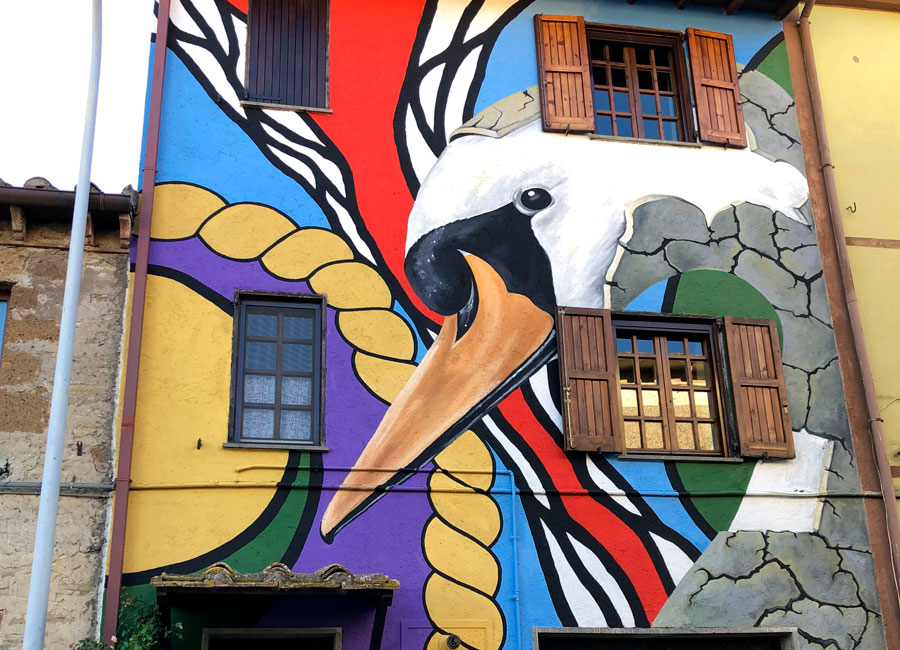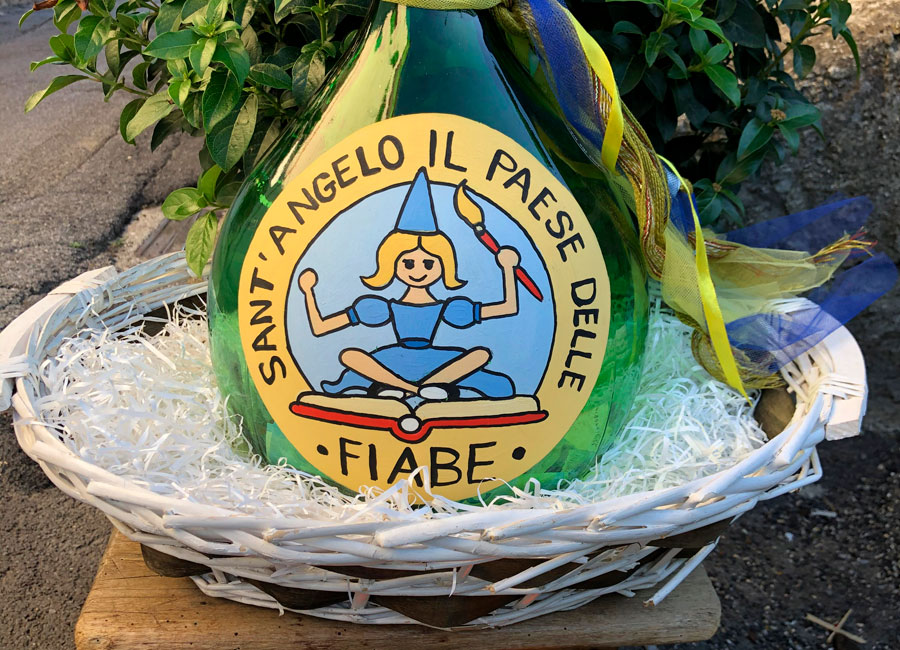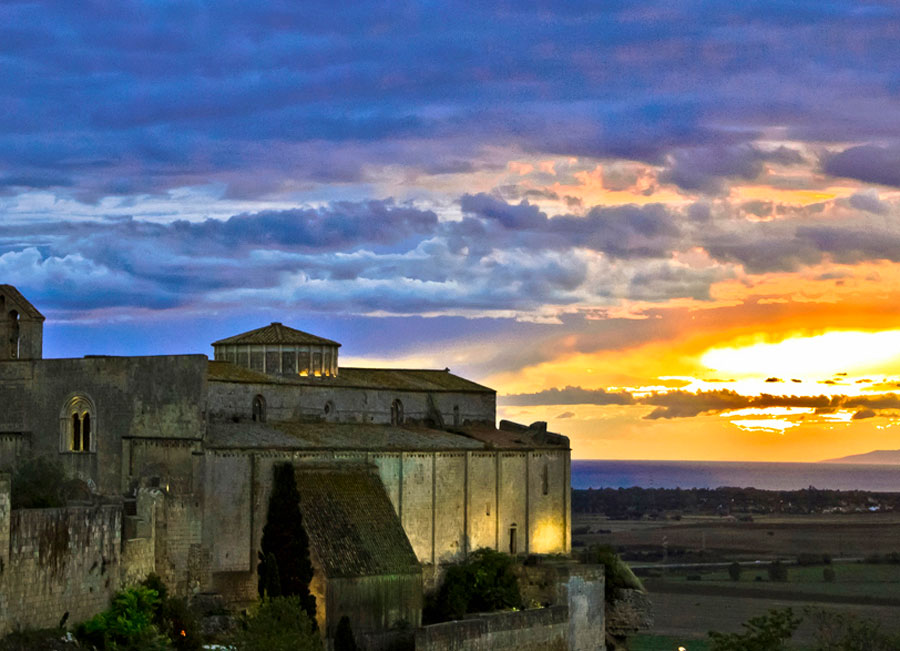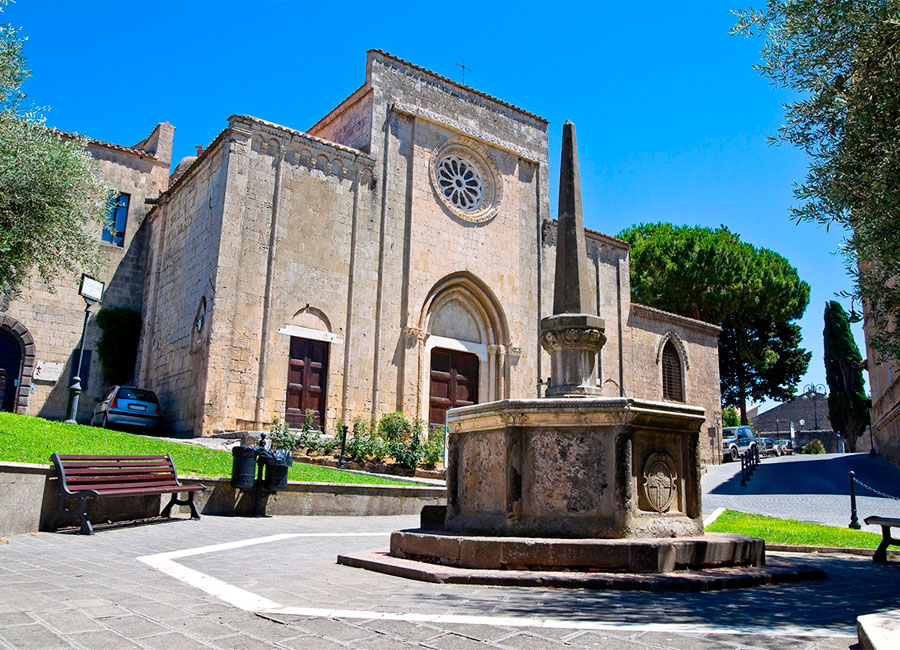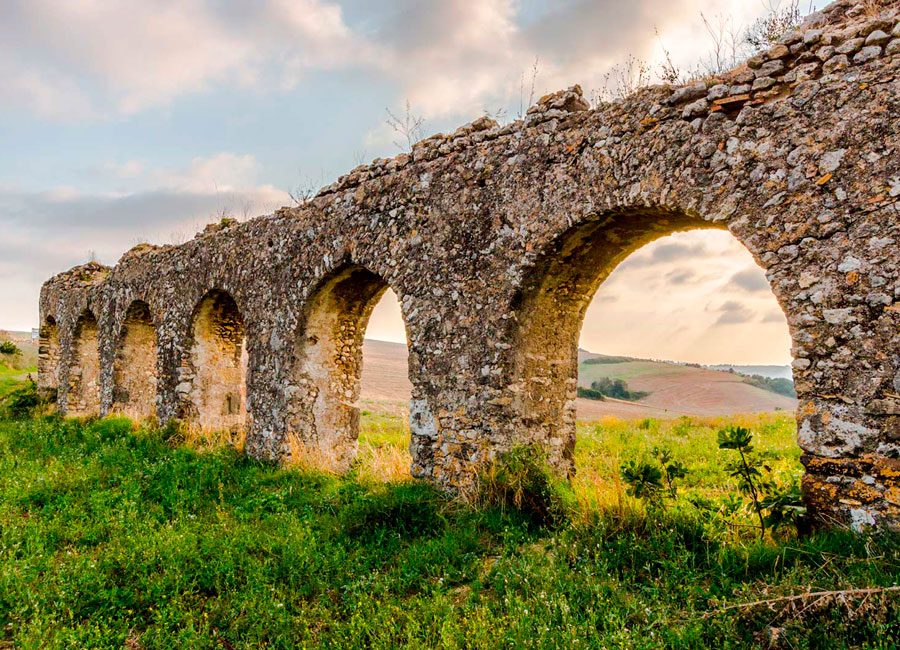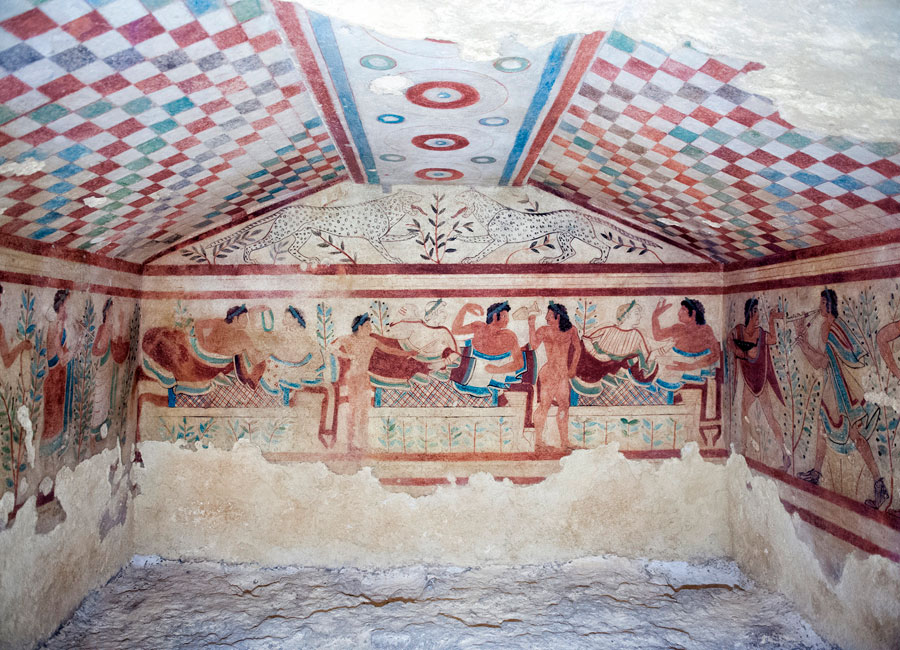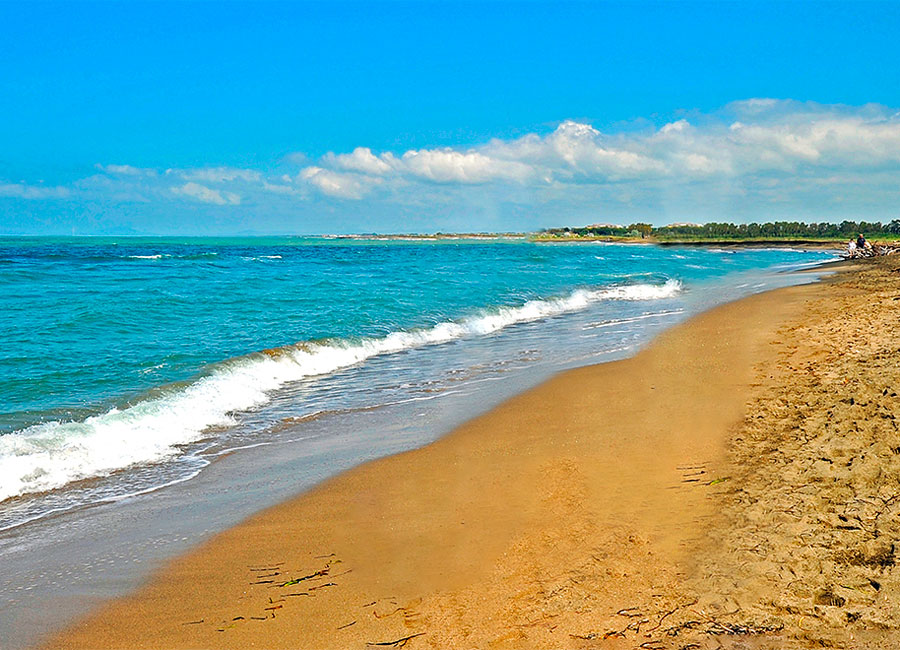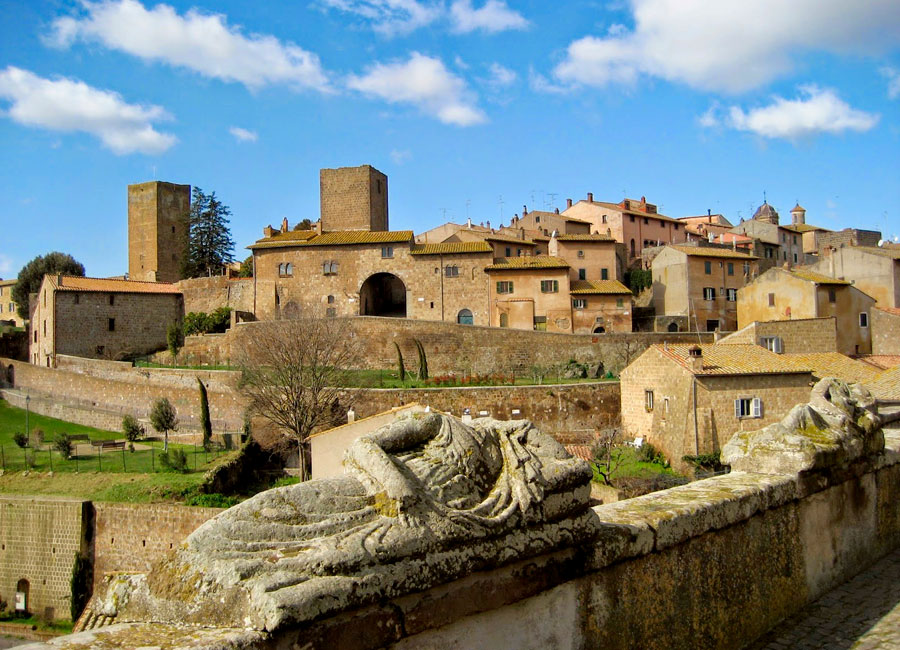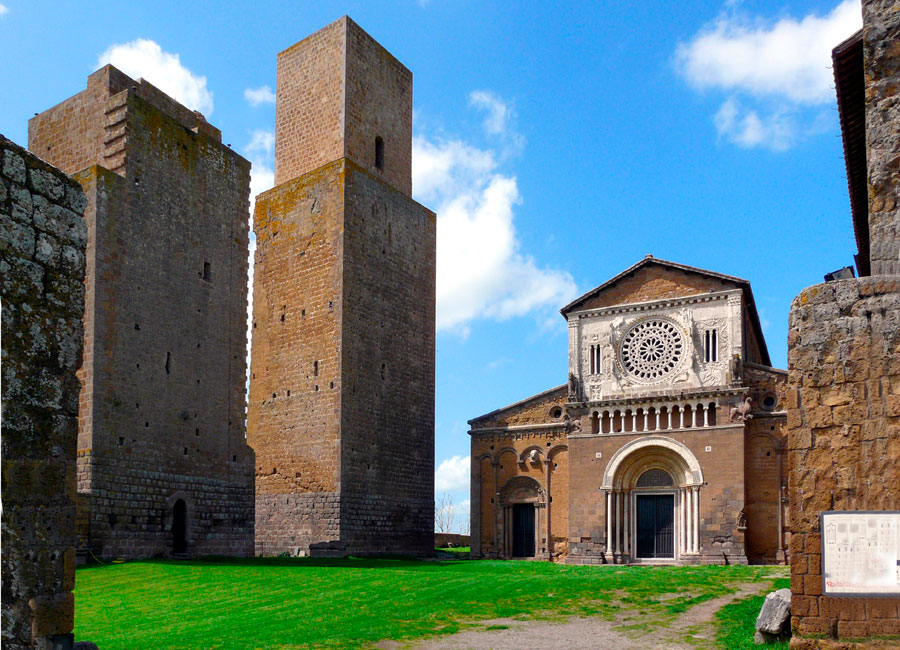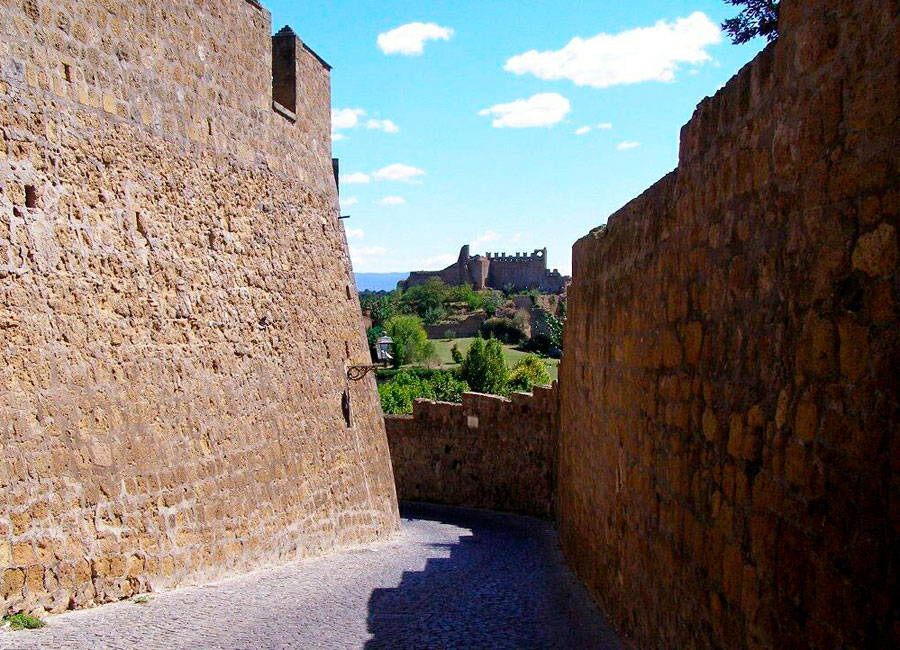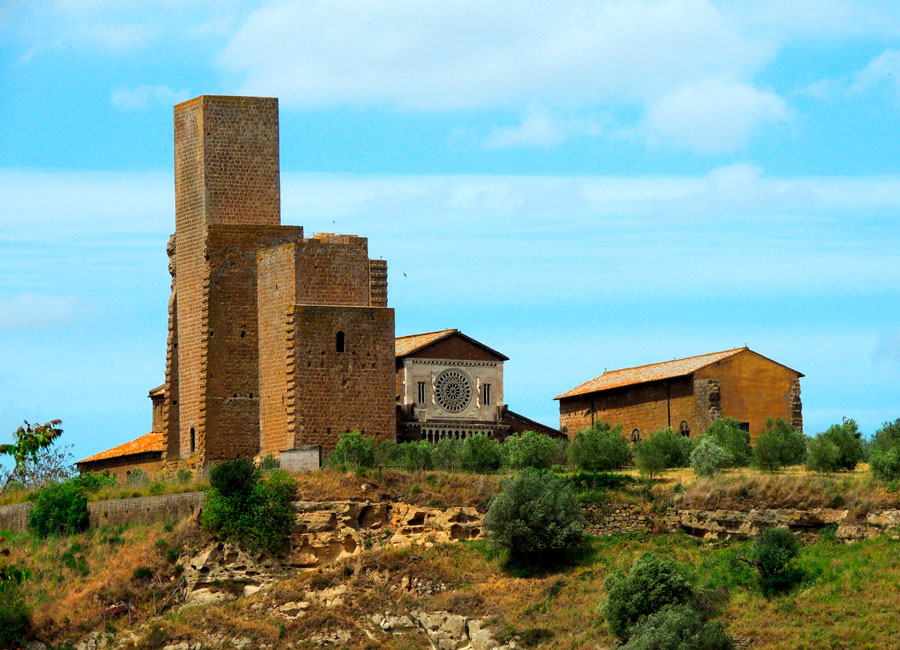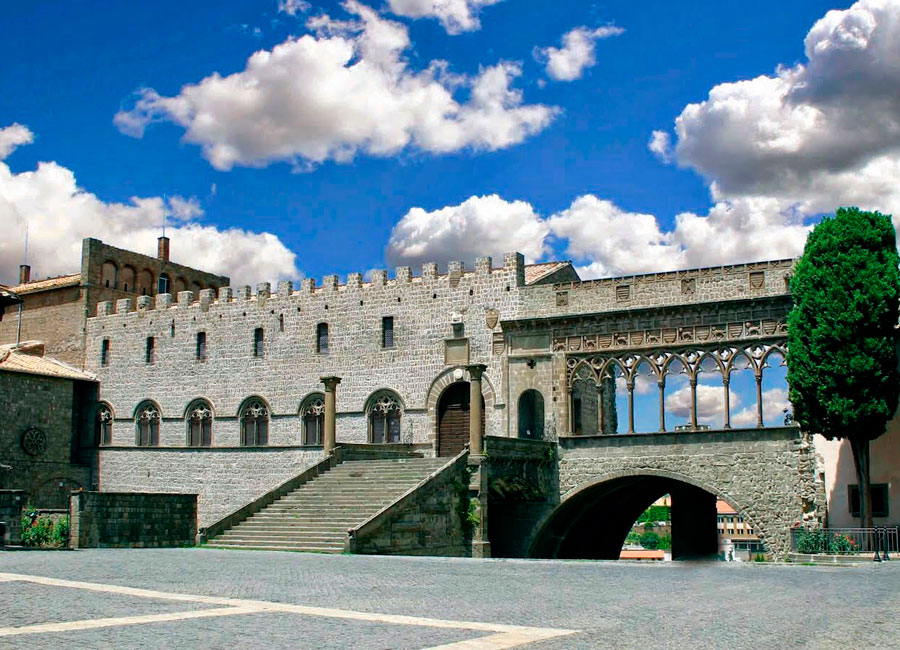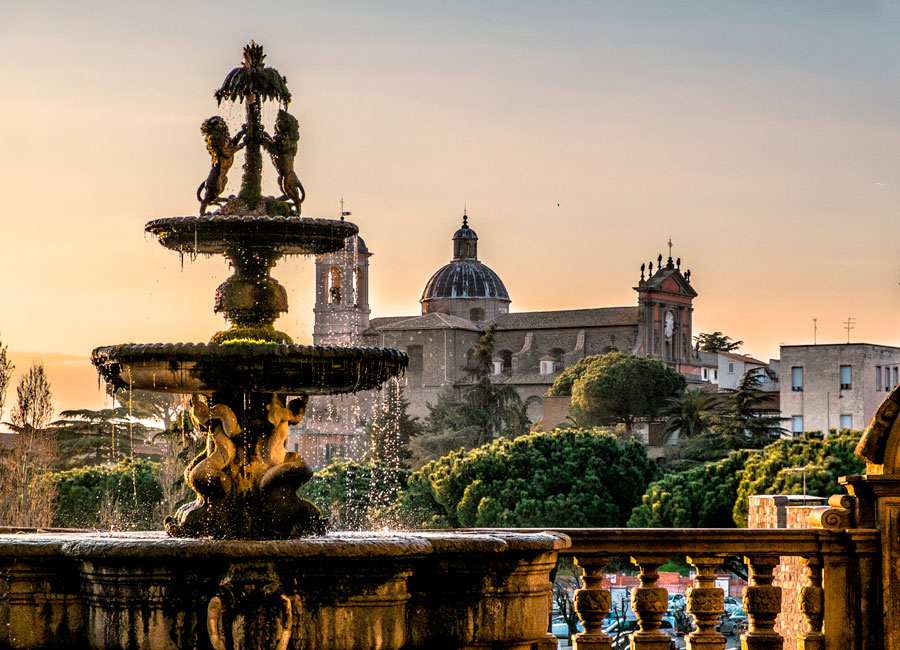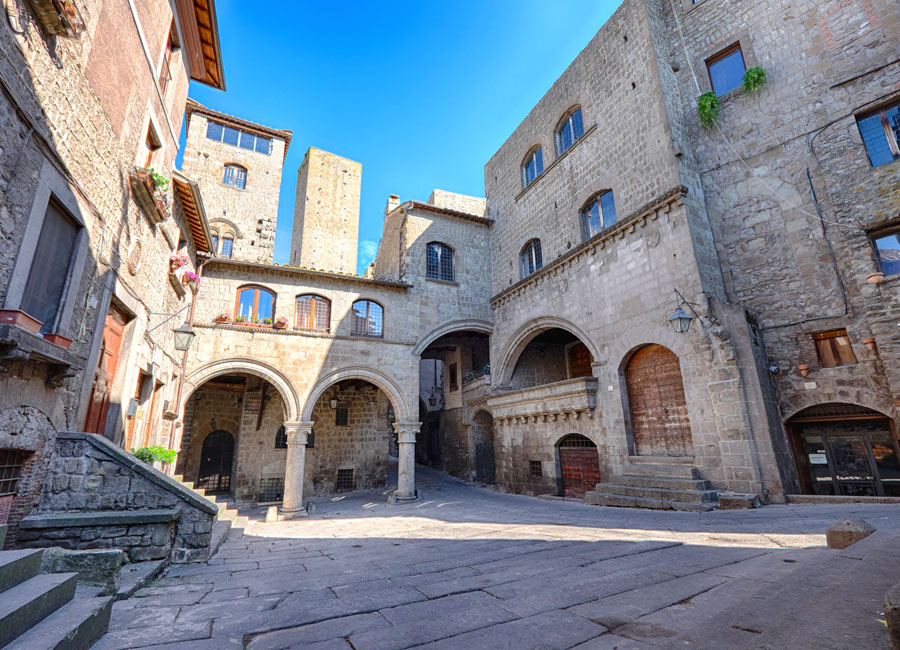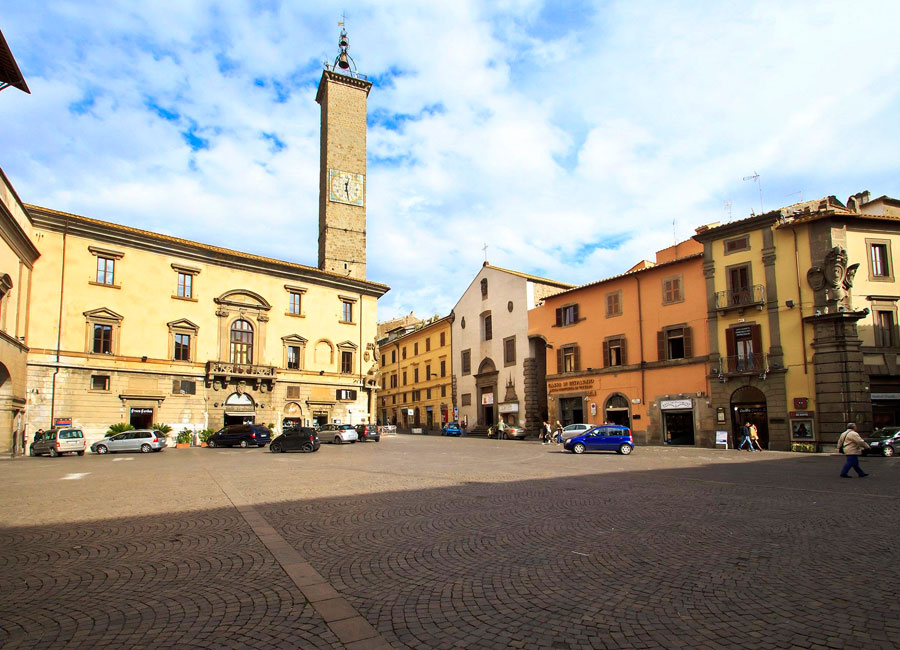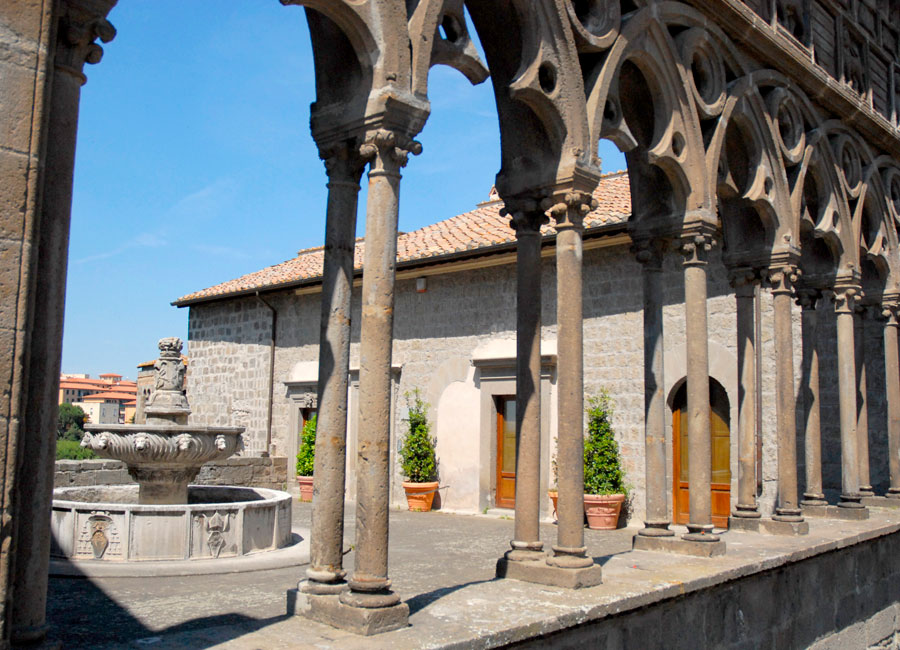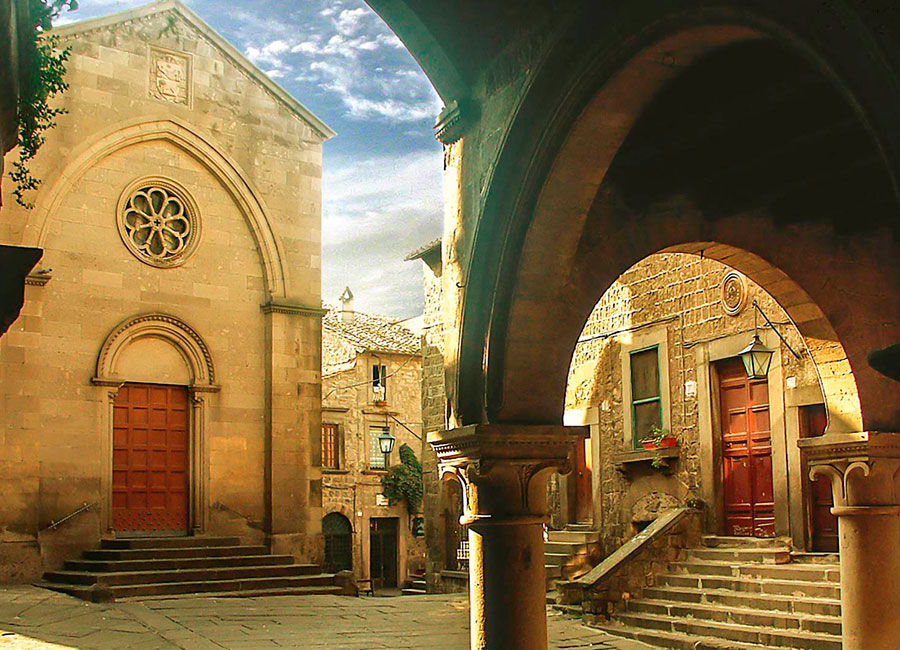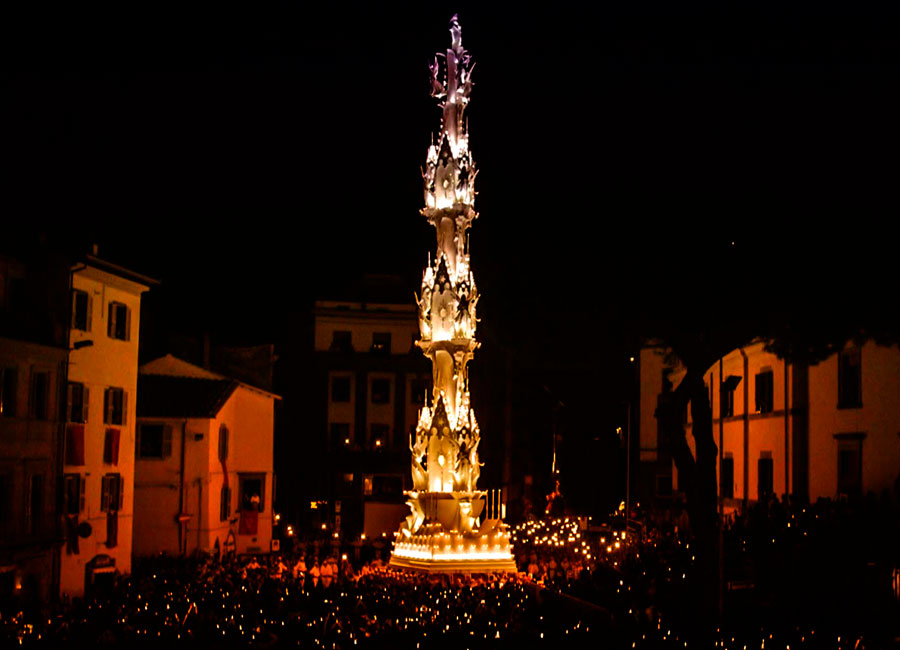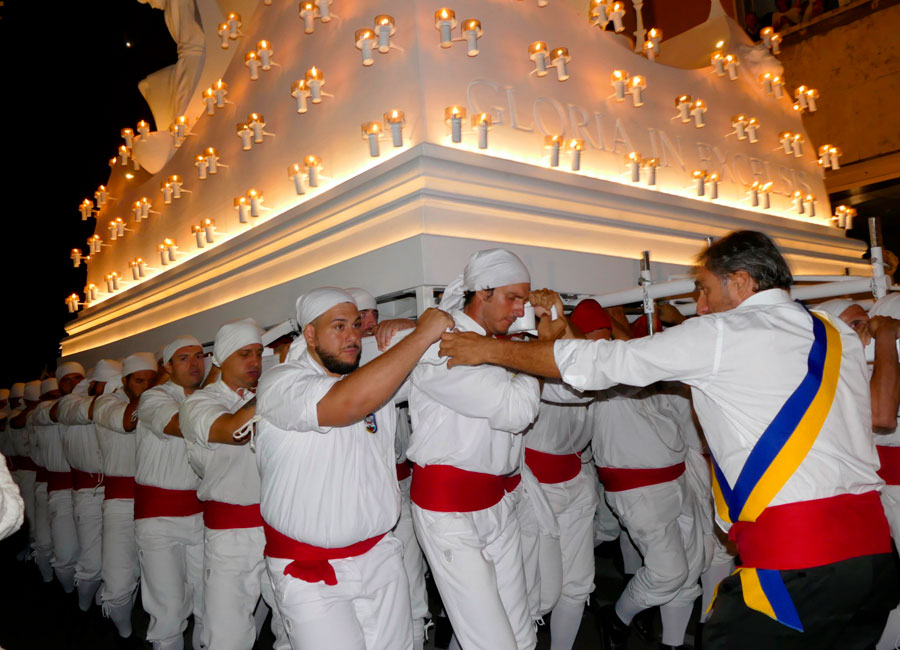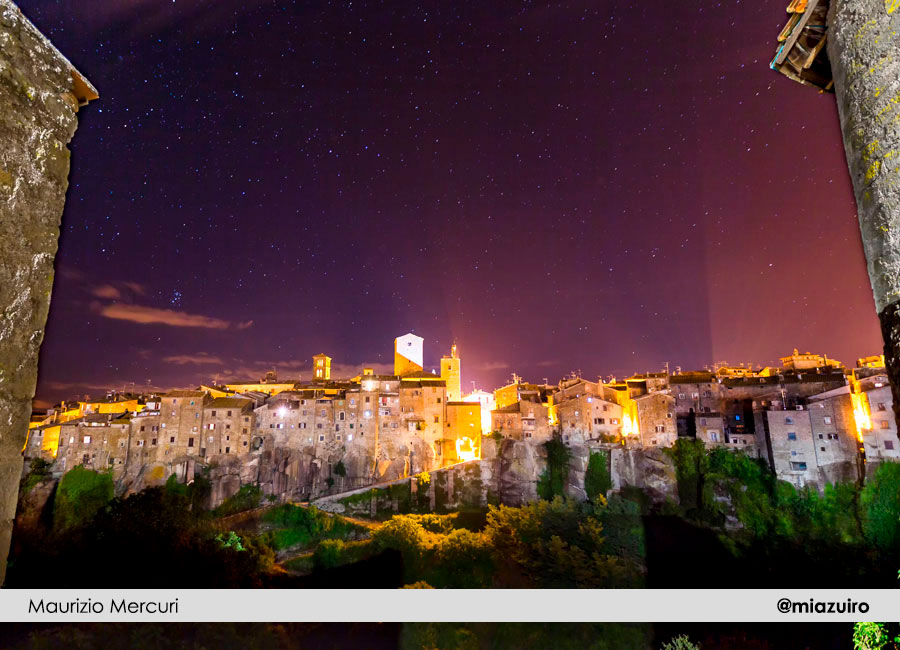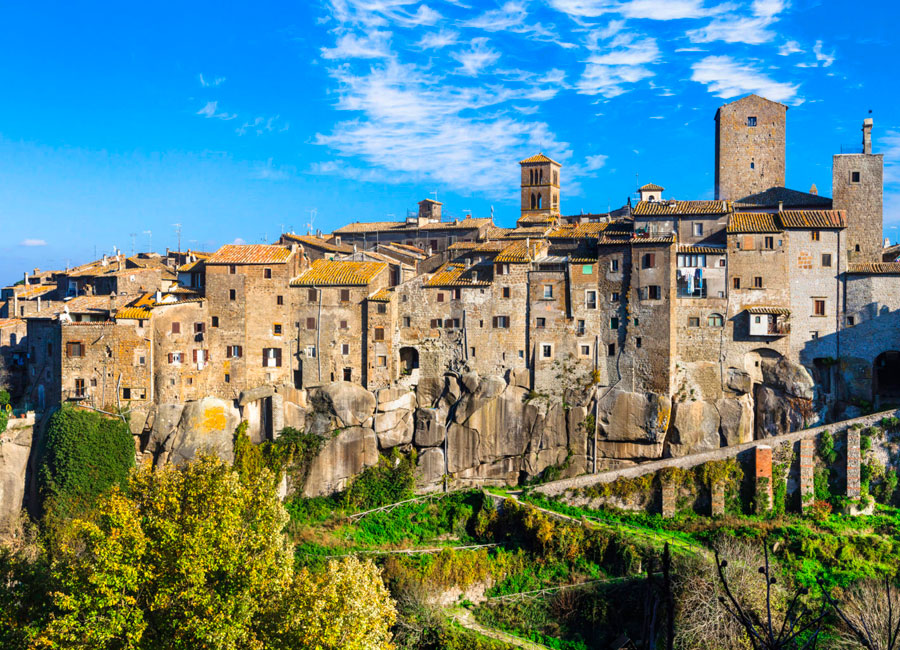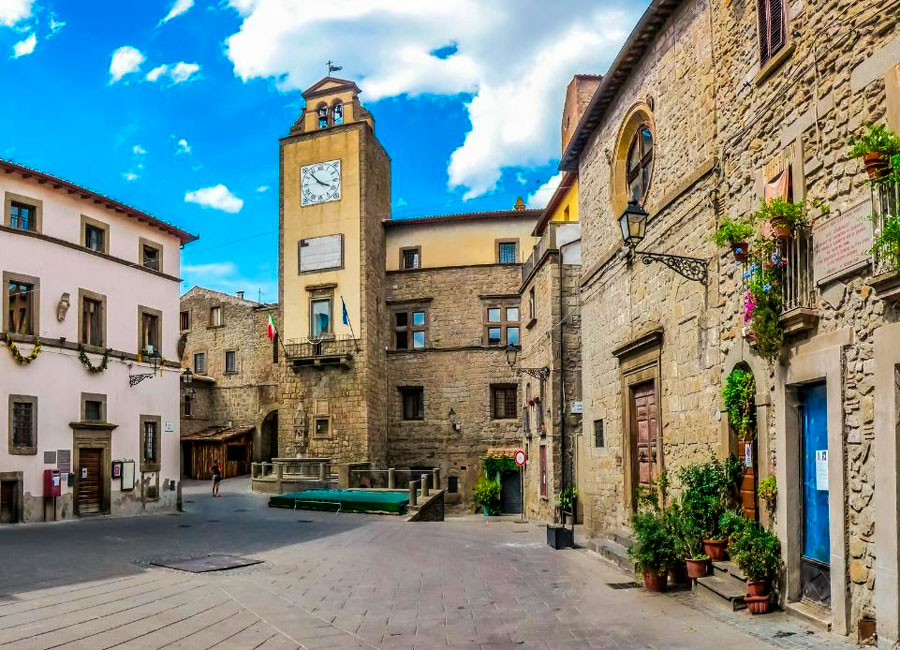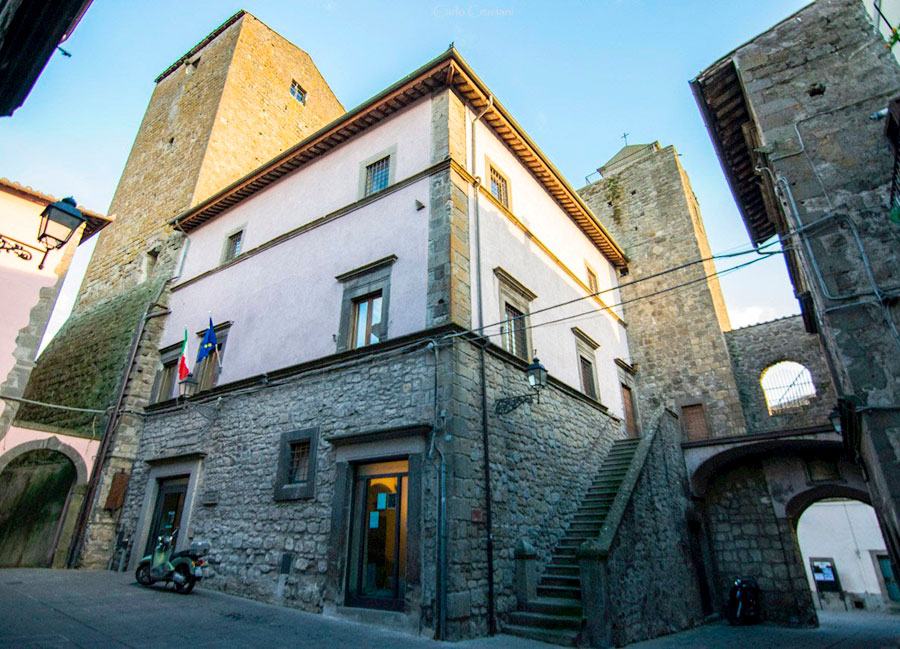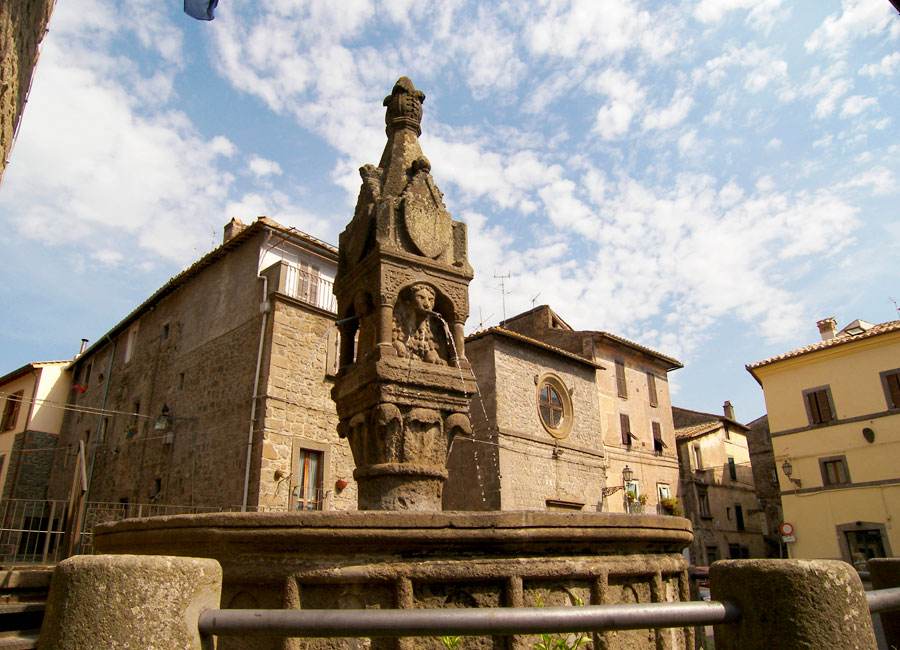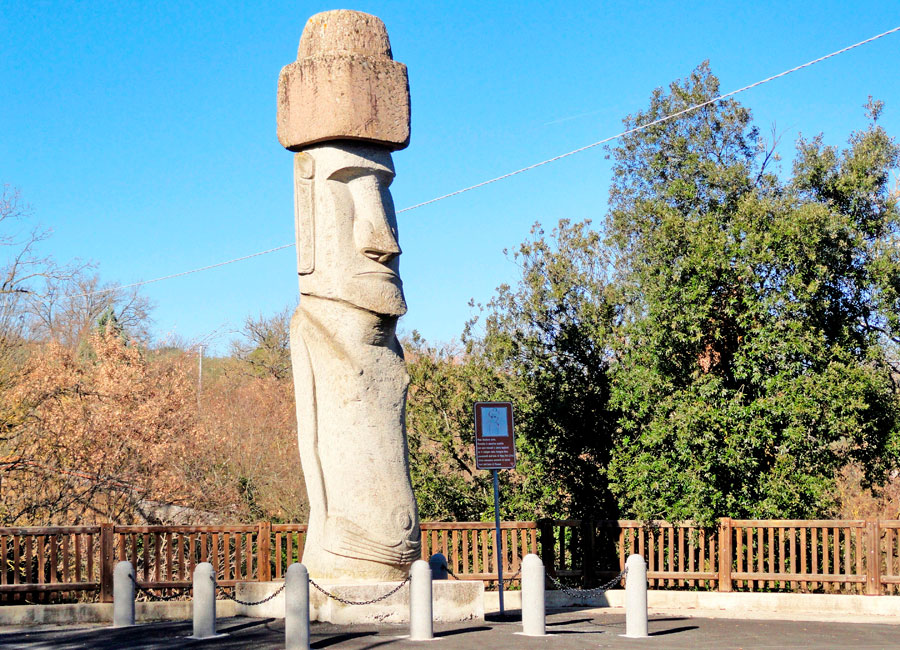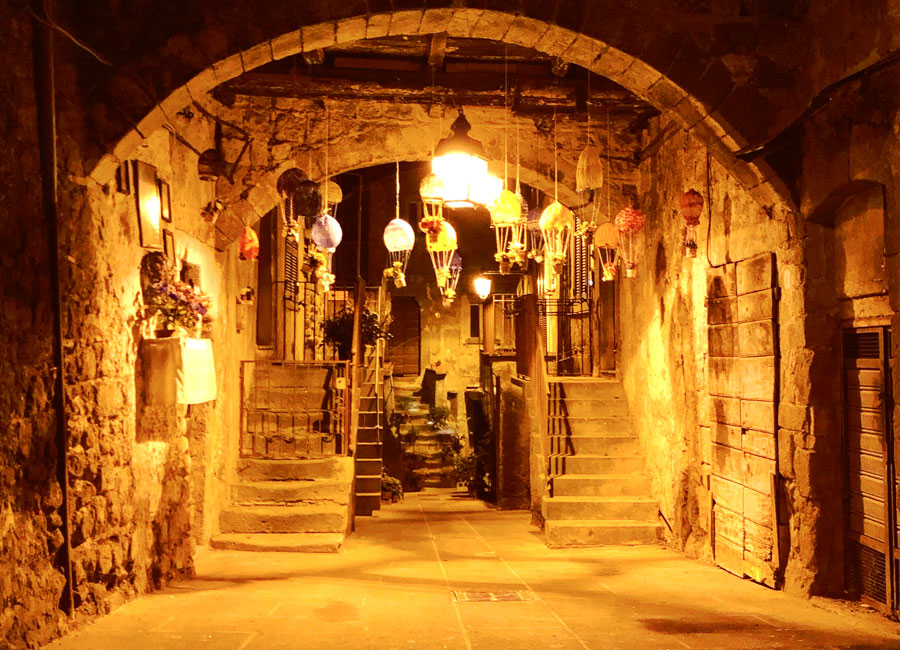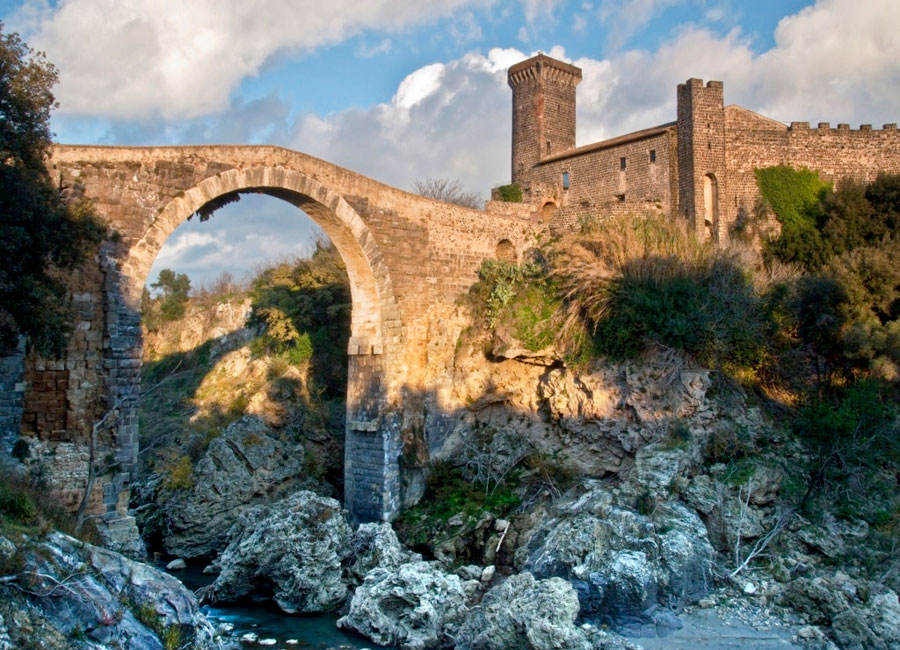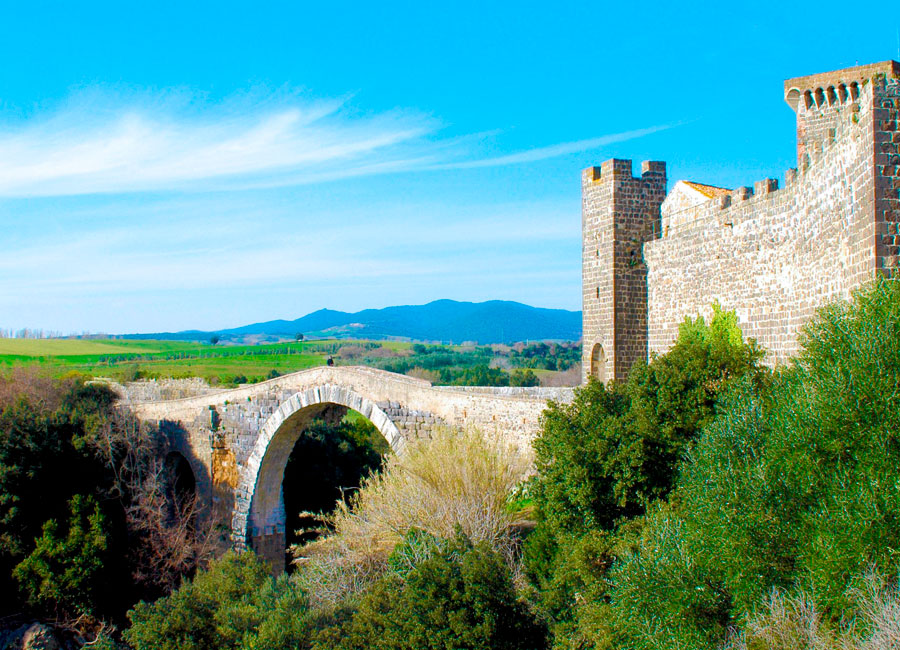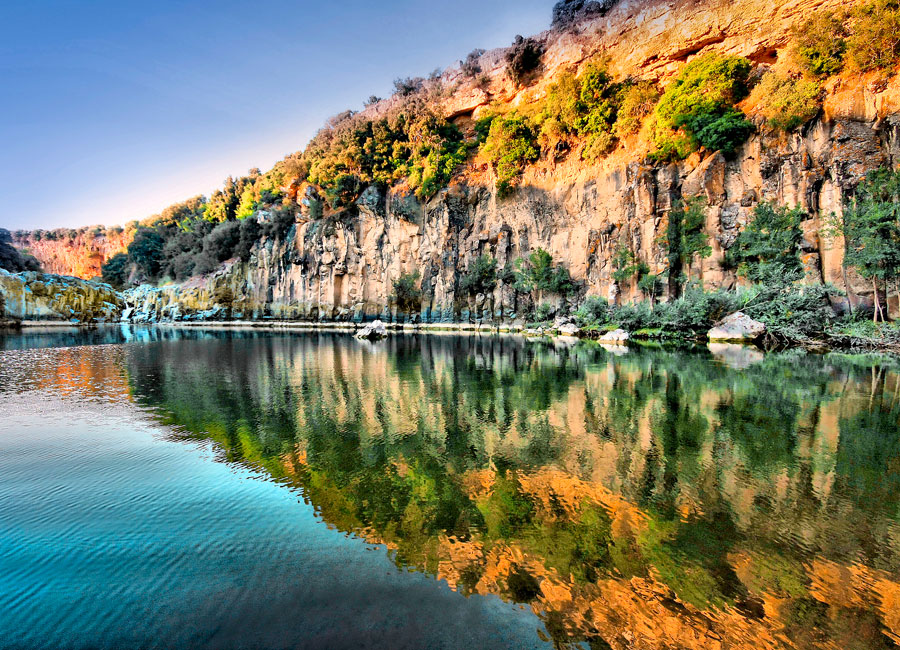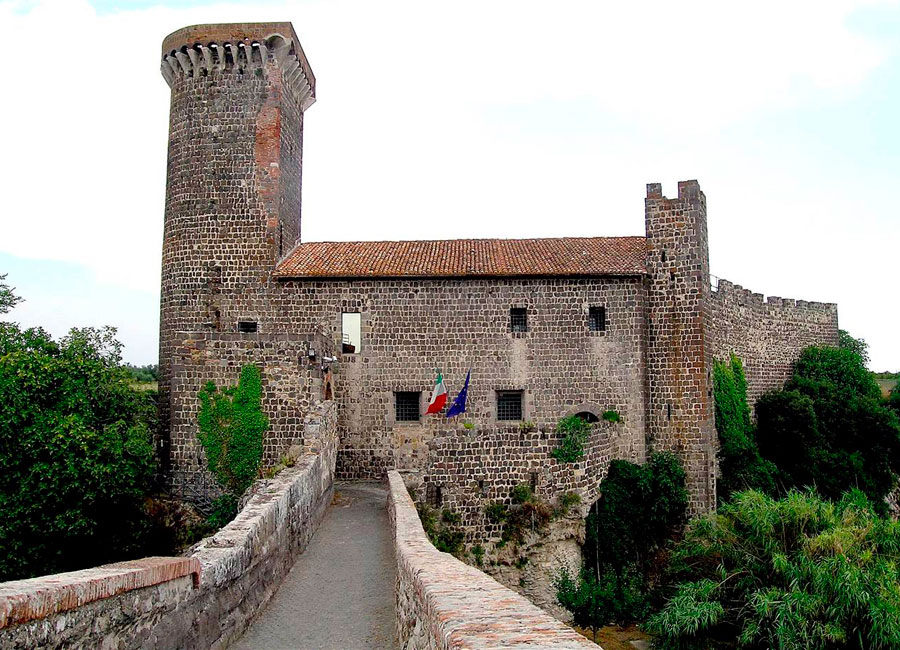Bagnaia – Villa Lante
Only 5 km from Vitorchiano the medieval hamlet of Bagnaia famous because of the well-known masterpiece Villa Lante which symbolize the art in the renaissance period. The Villa is composed by the famous twin houses Gambara & Montalto, and is defined by the charming Italian Gardens with numerous fountains and water displays, providing an harmonious and striking aura. The park cover several hectares ideal to spend relaxing times deep into nature.
Bomarzo
The monster park in Bomarzo also known as the Sacred Forest was born in 1552 as the “MARVELS VILLA” only 7 km from Vitorchiano is a cultural and artistic complex and because of its peculiarity unique in the world. The Monsters Park essence are the large statues and sculptures made out of Peperino stone blend in perfectly with the forest type and perfectly manicured with small avenues and open grassland.
Caprarola - Palazzo Farnese
Palazzo Farnese was built around 1500 for the Farnese family, and it is one of the most precious jewels of Renaissance architecture and the most famous monuments of Tuscia. We can easily say that it is known nationally and internationally. We can find here a vast park with a garden full of terraces and fountains, and in the middle we can admire a lovely ‘‘vignolesca’’ building by Jacopo del Duca. Not to be missed is the baroque Santa Teresa, a true marvel of Rinaldi. The palace was used as a set for many movies such as Il Padrino (part III), Don Bosco, or TV series I Borgia, I Medici and for many other movies and television productions.
Cascate delle Marmore
The waterfall is formed by the river Velino near the hamlet Marmore flows from Lake Piediluco and plunges into the gorge below the Nera. Just 30 minutes from Vitorchiano is one of the highest waterfalls in Europe able to count a total height difference of 165 meters in three jumps.
Castel d'Asso
The cliff sited necropolis of Castel d'Asso deep sited in the country side around Viterbo its rich with the number of Tombs dug out in the Tufo stone, the name originated from the Roman town of Axia built on an old Etruscan centre.
Celleno, il borgo fantasma
Celleno is a medieval town not far from Viterbo, and it is perched on a tuff spur. No one knows exactly when but in the past it was hit by terrible events in 1931 and earthquake destroyed it. Over time Celleno became depopulated and is now considered a ghost town.
Civita di Bagnoregio
Situated in an isolated position accessible by a bridge and only on foot, Civita di Bagnoregio is famous for being addressed "the dying city "Founded by the Etruscan people circa 2500 years ago with just a handful of houses occupied by only a few families, perched gently on a hill top, proudly dominating the valley below offer the tourist a fascinating and unforgettable panorama.
Ferento
The remains of the town of Ferento are found on the Teverina way, not far from the Tiber Valley, the most important monument of the old city is the theatre stemming back to the Augustus period, brought back to light through a series of excavations started in the nine hundred century. During the summer time in the theatre take place performances, and cultural events.
Bolsena Lake
The biggest lake in Europe formed by the collapse of a number of volcanos in the Volsini Mountains about 300.000 years ago of an oval shape the lake covers 113 square kilometres with an altitude of 305 metres above sea level, in the middle of it the two Islands Martana and Bisentina the latter place of rare beauty and charm enriched by the fauna and by the most beautiful internal gardens, numerous the little villages dotted around the lake shore the most enchanting being, Marta, Capodimonte and Bolsena.
Vico Lake
Formed about 100.000 years ago of volcanic origin the lake Vico covers 12 square kilometres, 507 meters in altitude and is surrounded by the Cimini mountain chain, inside a preserve accessible on foot, mountain bike, horseback or 4x4 vehicle visit the Marshy areas and the paths of Mount Venere and Mount Fogliano are beautiful places to be visited. They are covered with tall trees, in particular beech and oak.
Montefiascone
Far 15 km from Vitorchiano, Montefiscone overlooking the Bolsena Lake, famous for its wine production and rich in monuments. Do not miss the churches of Santa Maria di Montedoro, San Flaviano and the cathedral of Santa Margherita which has a dome ranked among the largest in the country.
Orvieto
About forty five kilometres from Vitorchiano Orvieto of Etruscan origins and built on a tufo cliff, the monuments and history found in Orvieto make the place unique and striking, without doubt the most important monument in the city is the Duomo, masterpiece of the Italian Gothic architecture and the St.Patrice well, and not to miss the other museum and monuments found in and around the City.
San Martino al Cimino
A small hamlet few minutes’ drive from Vitorchiano where not to be missed the Abbey, and the Doria Panphili Palace.
Sant'Angelo
Once upon a time, there was a small town in Tuscia, where fairy tales came to life. This place is called Sant’Angelo and is a fraction of the municipality of Viterbo. This little town has created its own artistic path and here the popular language which is spoken, is the same as the one spoken in the fairy tales, accompanying visitors through the most famous characters and stories of their childhood. Visitors can also admire and photograph all the many murals on the houses of the historic center, which are lit up with colors and imagination.
Tarquinia
Being the oldest and most important settlement of Etruscan civilization, this days the town is known worldwide for the presence of the Etruscan Graves. At present the town centre extends on the opposite hill to were the old civilization developed and overlooking the Tyrrhenian Sea. The Vitelleschi Palace the location of one of the most remarkable archaeological Italian museum.
Tuscania
On the verge of Viterbo’s Maremma the Saint Peters’s hill the symbol of Tarquinia, we find two renown Roman Churches St. Peter and Santa Maria Maggiore, the meaningful stability of human settlements relates back to the Etruscan period reviled by several Necropolis around the area most noted of which that of Madonna dell’Ulivo.
Viterbo
Medieval City of great historic traditions, well preserved with a historic centre unmatched in its own right, with narrow streets, little squares, towers, centuries old fountains and ramparts. The most typical monument is the Pope’s Palace centre place of five conclaves amongst them the election in 1271 of Gregory the tenth, remembered as the longest Conclave in the Church history. Not to miss the Cathedral of Saint Lorenz and the medieval characteristic district of Saint Pellegrino, Plebiscite Square, the Sanctuary of Madonna della Quercia and The Santa Rosa Cathedral were the body of the city patron Saint is venerated. In Viterbo emerge thermal spring were the warm mineral waters are used for medical and beauty treatments in dedicated centre equipped with state of the art systems, plus various pools with free access.
Vitorchiano
A centre rich of history with traditions stemming back thousands of years and were one can admire the mighty remains of the village walls constructed in medieval times to defend the village from enemy attack, The Romana doorway the only one remaining in the surrounding wall that still today is the main access to the historic centre, the church of the Holy Trinity built during the sixteen century it preserve precious fifteen century artefacts, the Malano forest naturalist oasis of extraordinary beauty, were are found imposing remains of Etruscan settlement, the Moai statue, and the famous Peonie Gardens.
Vulci
An old Etruscan town on the border with Tuscany, the archaeological Park is nature, archaeology, culture and tradition, Francois tomb the museum in the castle of Badia, the Pellicono’s small lake the ideal place to spend a day in the naturalistic archaeological Park of Vulci. In the National Museum there are relics from the excavations carried out in the city and necropolis.
